What is a Scete?
The skete (Scetis) as a form of cohabitant has been among the 4 types of early Christian hobatiation along with eremitic (hermet life), lavritic from laura (Greek: Λαύρα; Cyrillic: Ла́вра) is a type of consisting of a cluster of cells or caves for hermits, with a church and sometimes a refectory at the center. and coenobitic (another monastic tradition based on community life).
Origins of scete communities
A skete (from Coptic ϣⲓ(ϩ)ⲏⲧ via Greek σκήτη) is a monastic community in Eastern Christianity that allows relative isolation for monks, but also allows for communal services and the safety of shared resources and protection.
Skete communities usually consist of a number of small cells or caves that act as the living quarters with a centralized church or chapel. These communities are thought of as a bridge between strict eremitic lifestyle and communal lifestyles since it was a blend of the two. These communities were a direct response to the ascetic lifestyle that early Christians aspired to live. Skete communities were often a bridge to a stricter form of hermitage or to prepare for a martyrdom in times of persecutions.
Hitchiking to Zhyrovichi and Rosakovo Scetes
As I've been with my wife for a 2 weeks trip to her home country Belarus, staying in Krasnoselsk a small 7000 inhabitants town, near the bigger Valkovoysk, one of the local Church serving friends of mine Evgeni offered that we go for a pilgrimage to Zhyrovichi monastery. We took the road as a hitchhikers and on our way to Zhirovichy after changing 4 cars to reach a gas station nearby Slonim, the idea come that instead of directly going to Jirovichi to go instead and visit a Nun skete at village of Rosakovo consting of 9 nuns just about 5-6 km distance from Zhirovichy.
To reach there we were taken as hitchikers by a kind guy riding on a classical world famous Belarusian track MAZ (Minskiy Avtomobilnij Zavod literaly translated as Minsk Automobile Factory). This trip was my first trip on a MAZ truck quite an exciting adventure to be honest, as so far I never had the chance to ride on an old Soviet style truck 🙂
We reached in Rusokovo about 16:30 just to be amazed of the beauty of the beautiful Russian style Eastern Orthodox skete Church.
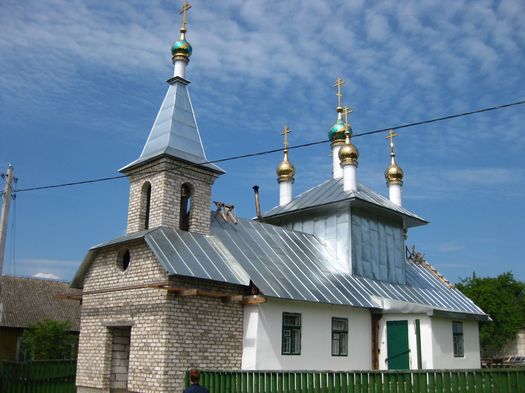
The skete of Rusakovo started its existence just 14 years ago in 2005 with the blessing of Zhirovychi monastery abbot archibishop Guriy (Gurij) – archibishop Novogrudskij and Lidskijy.
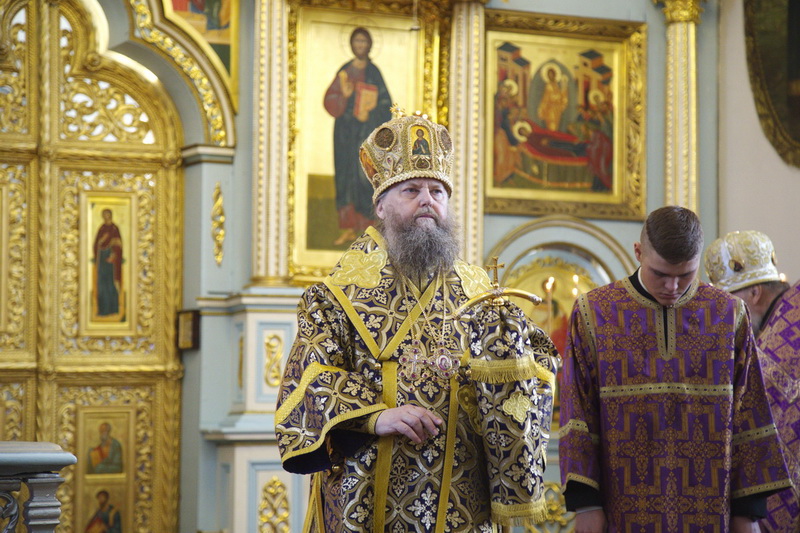
Archibishop Guriy Apalyko Novogrudskij and Slonimski
(Архиепископ Гурий Новогрудский и Слонимский (Апалько)
Skete started to build in the dying village of Rusakovo left with just few inhabitants very near some of the post-communist abandoned buildings of a Kolhoz (collective ownership) so popular in the times of communism across USSR and its satellites, which stemmed from the Jewish Kibbutz used by Jews before the official establishment and official recognition of Israel.
The idea of the Skete is to create a more ascetic place, where the many volunteer ladies who often are helping in the works of the Zhyrovichi Men (Monks) monastery and desired to become a novice nuns and nuns to be able to live and pray incessantly in their own sisterhood.
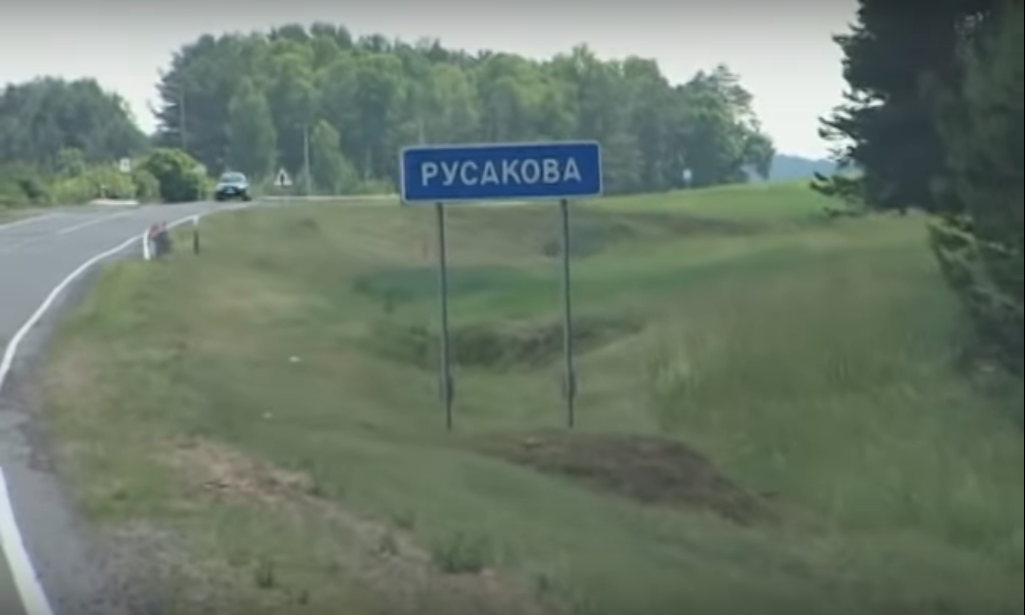
The village of Rusakovo is situated just about 6 km from the Village of Zhyrovichi and Zhyrovici monaster which is at the moment the biggest monastery in Belarus by number of monks (currently the monastery consists of about 34 monks and few novices).
Local people of Zhirovichy and the region say because of Zhirovichy's monastery and the appearance of the Holy Theotokos Virgin Mary the Mother of God, Zhirovichy and all its regions are under her spiritual protection.
This believes by locals could be feeled for sure in the Skete of Rusakovo as my Soul their felt like being in heaven in an inexplainable peace and joy.
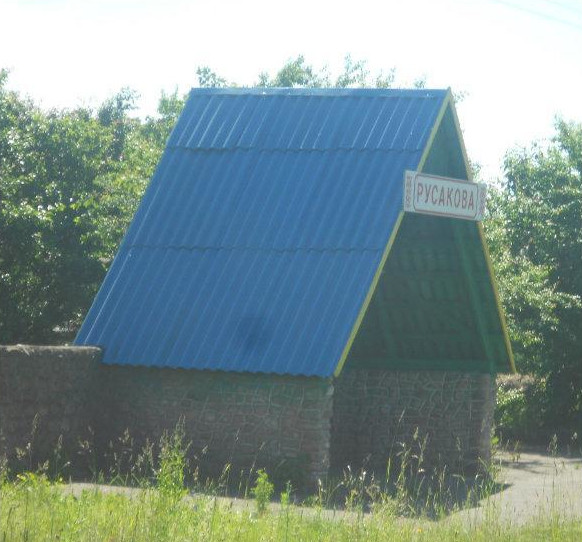
The unusual bus stop of Rusakovo village Grodnenskaja Oblast, (common for villages in Belarus)
The existence of such a Skete exactly in Rusakovo village was also not a coincidence as in the past this village was famous for having a people with a very strong faith in God as well as the village was famous for many of its inhabitants serving in the Church altar as "panamari" / hipodeacons many of whom are being buried in the small graveyard near the end of the village.
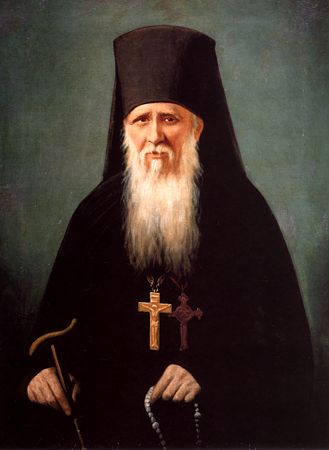
Elder Saint Ambrose of Optina Desert
Short History on how Rusakovo Scete was build
As a first living breath to Rusokovo Skete St. Ambrious of Optina Desert (a Russian saint from the, several nuns were transferred from the Slonim Holy Annunciation Monastery, here they settled in an old decrepit wooden house. There were cracks in the floor, the water froze, slept on folding beds, there was no money and bread, and the only income the nuns had was their own grown potatoes, tomatoes, cucumbers, pepper, cabbage, garlic, onion etc. …
The nuns started building the Skete's Church on top of old abandoned village home, sitting on elevated place.
During the Church construction works the nuns learned a lot of subtleties and wisdom of builder mastery. A lot of people relatives and close friends to the nuns and the few novices nuns joined and helped with the construction of the Church and the monastic cells building. A good hearted benefitors were found that has sacrificied in the name of Christ and donated the Church Bells, gave money and materials for the creation of Church Domes and one good hearted man even made a donation of the whole iconostasis Church wall !
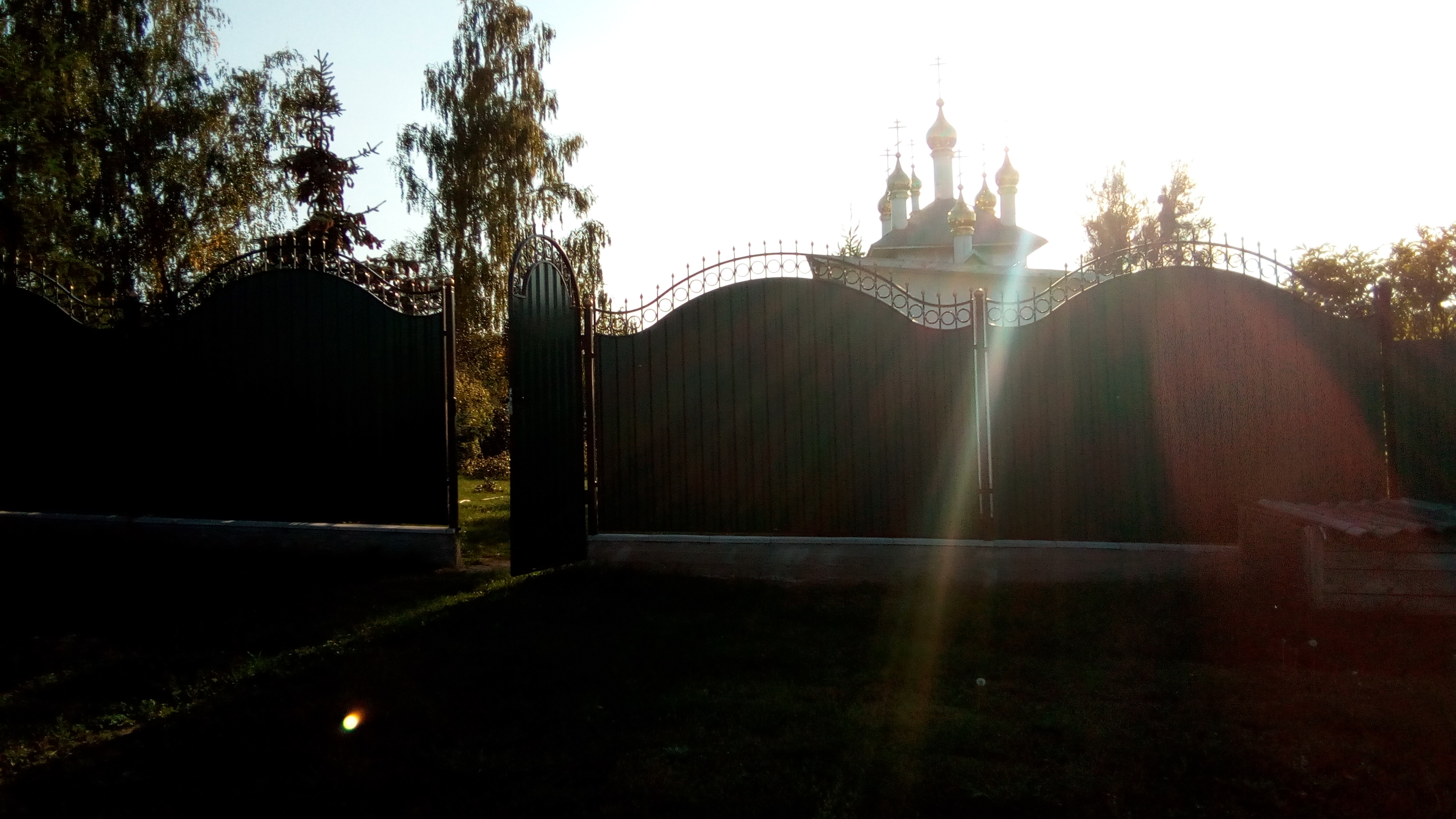
View to Rusakovo Skete Main Church
![]()
The multiplication of Breads – Icon painted with the Blessing of Saint Elder Ambrose of Optina Desert
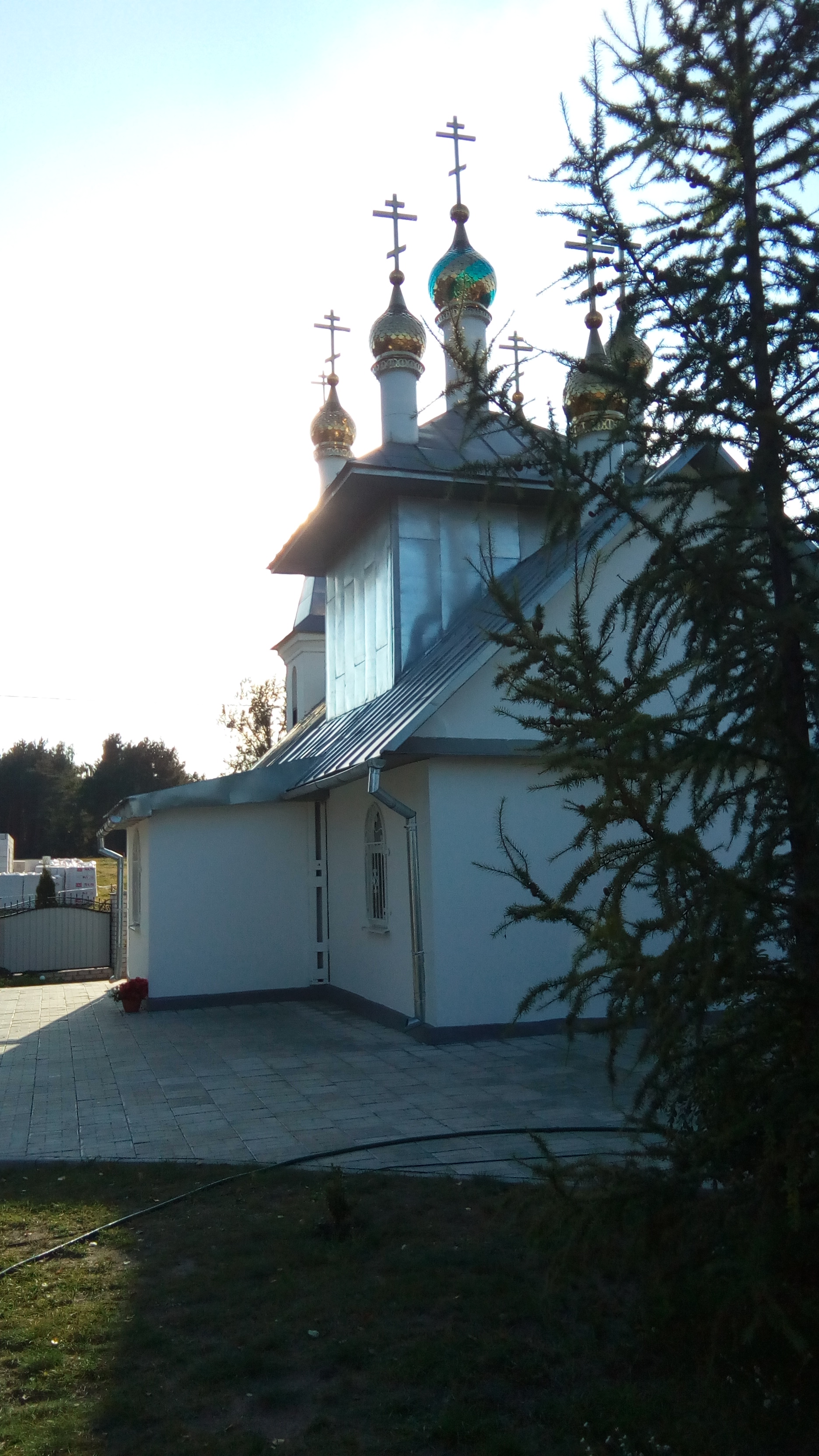
The Church built in honour of saint Ambrose of Optina looks very beautiful as a temple of the true God should look like, the coupols are gold-plated as it is in many Russian Church, the reason for that is to accent that the Holy Spirit of Almighty God is descending over this domes to the the Church alter.
Inside the Church the atmosphere could be best described with the words warm and welcoming, entering the Church building, feels like really entering home. On the Church entrance, we had the blessing to meet the serving priest which as of time of writting this article is father Georgij, inside the Church we found one of the nuns mother Tatiana which had the obedience to sell Church candles and the monastery produced herbal medicines.
The magnificence of the outlook of the Church is hard to be described in words.
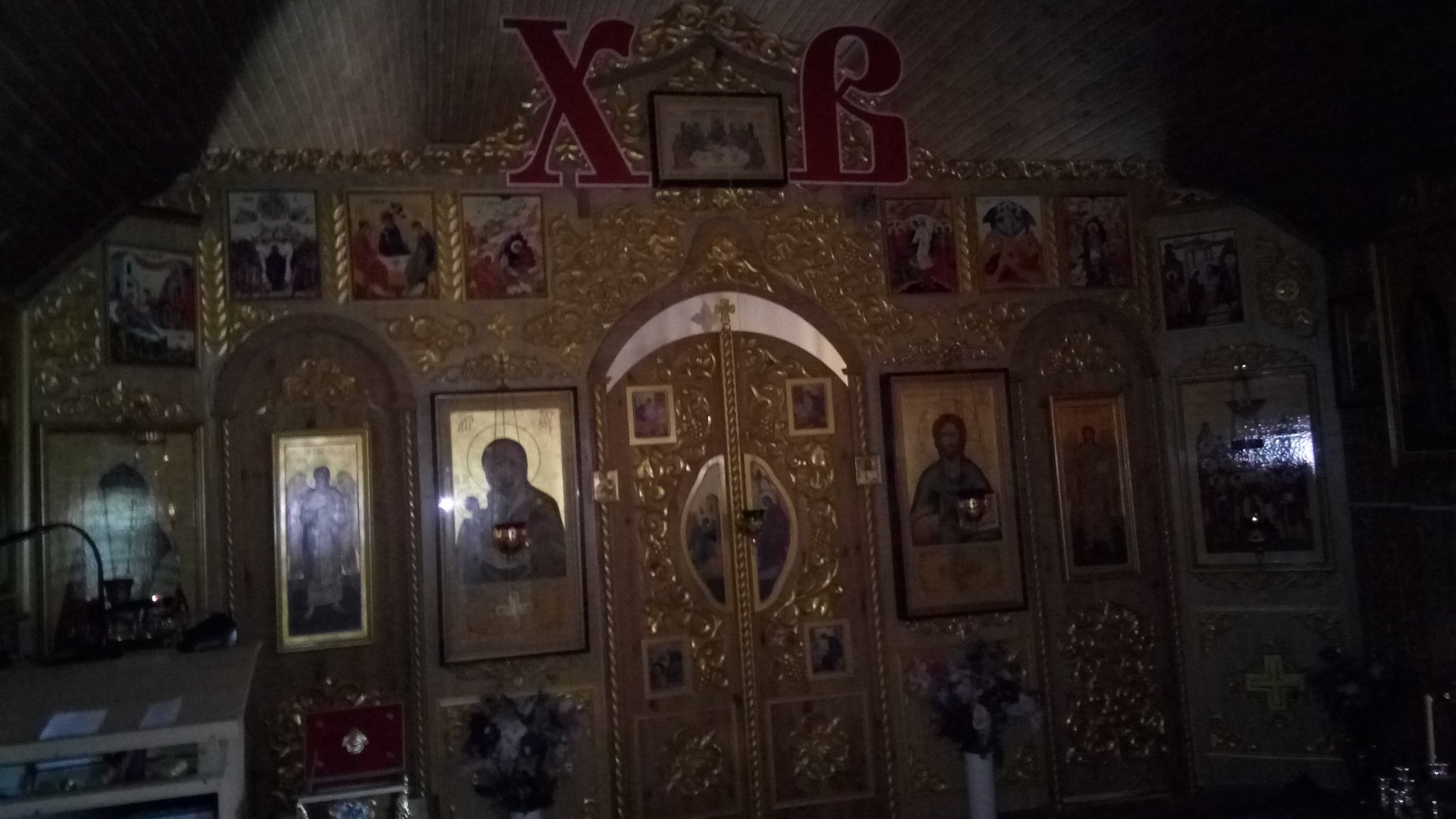
View to Church Alter Doors (Dveri) a symbol reference to the Heavens Gates -ХВ stands for Христос Воскресе / Christ is Risen
![]()
Saint Ambrose of Optina icon with embedded holy relics Rusakovo Zhyrovichi skete Belarus notice on the back the bricks – this is a Russian Petch (Петчь) / Petchka. This was how Russians heated their homes and cooked for centuries, in the Church "The Petch" is used to heat the Church in the Cold Belarusian Winters.
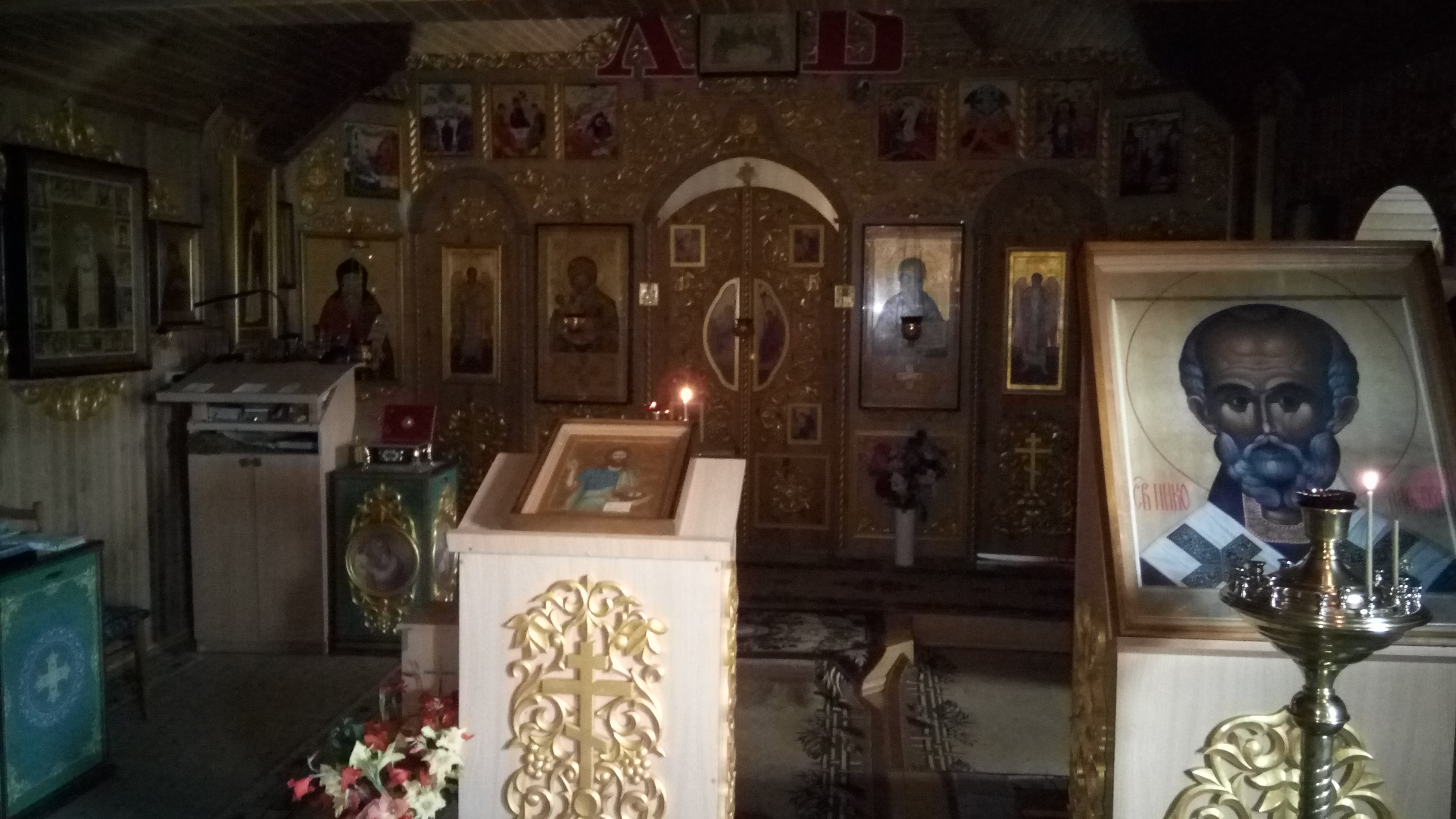
Saint Nicolas icon and the usual feast Church icon which of this day was for the Beheading of Saint John The Baptist
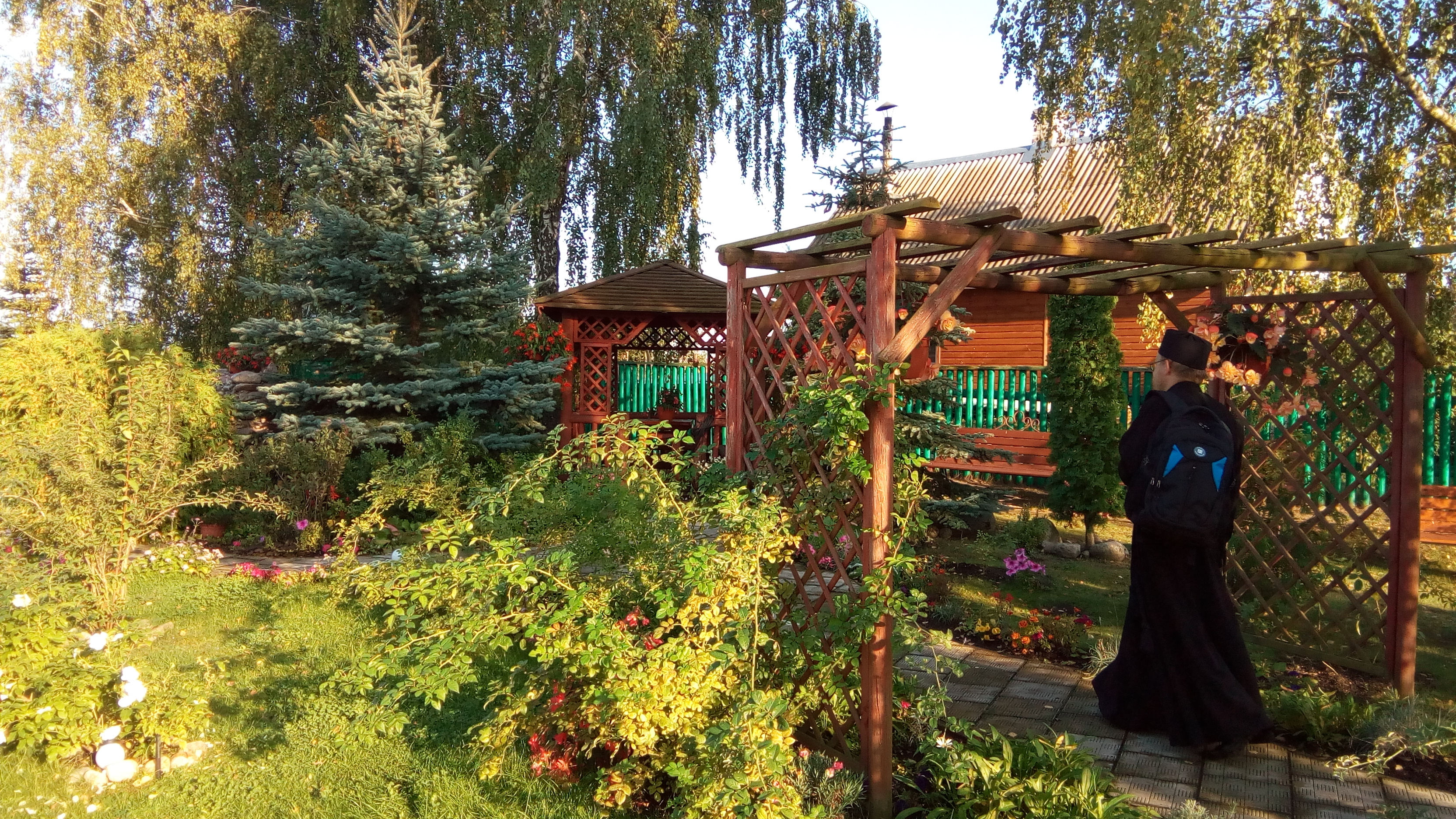
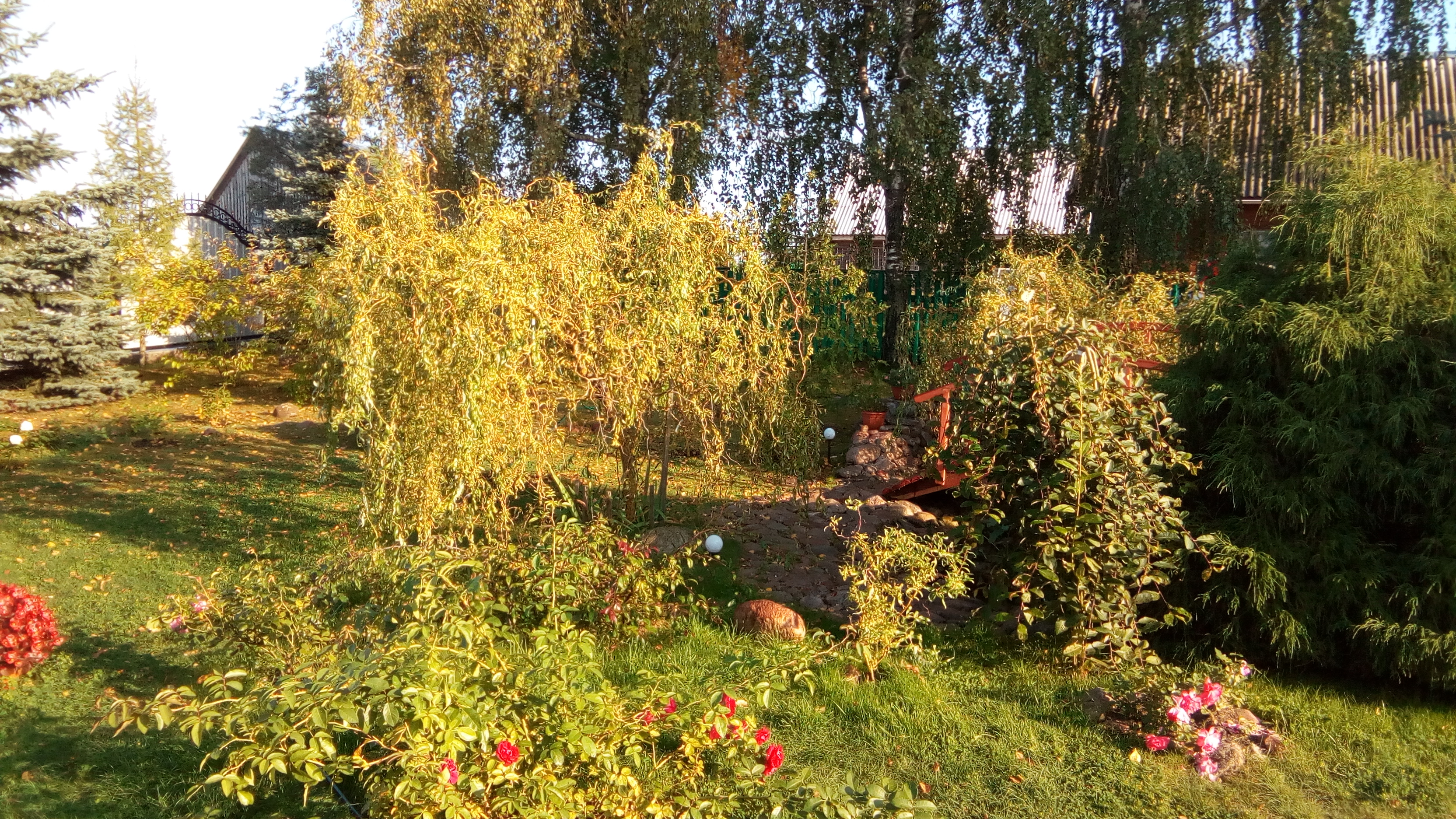
Heaven like Church Garden near the Rosakovo village Belarus
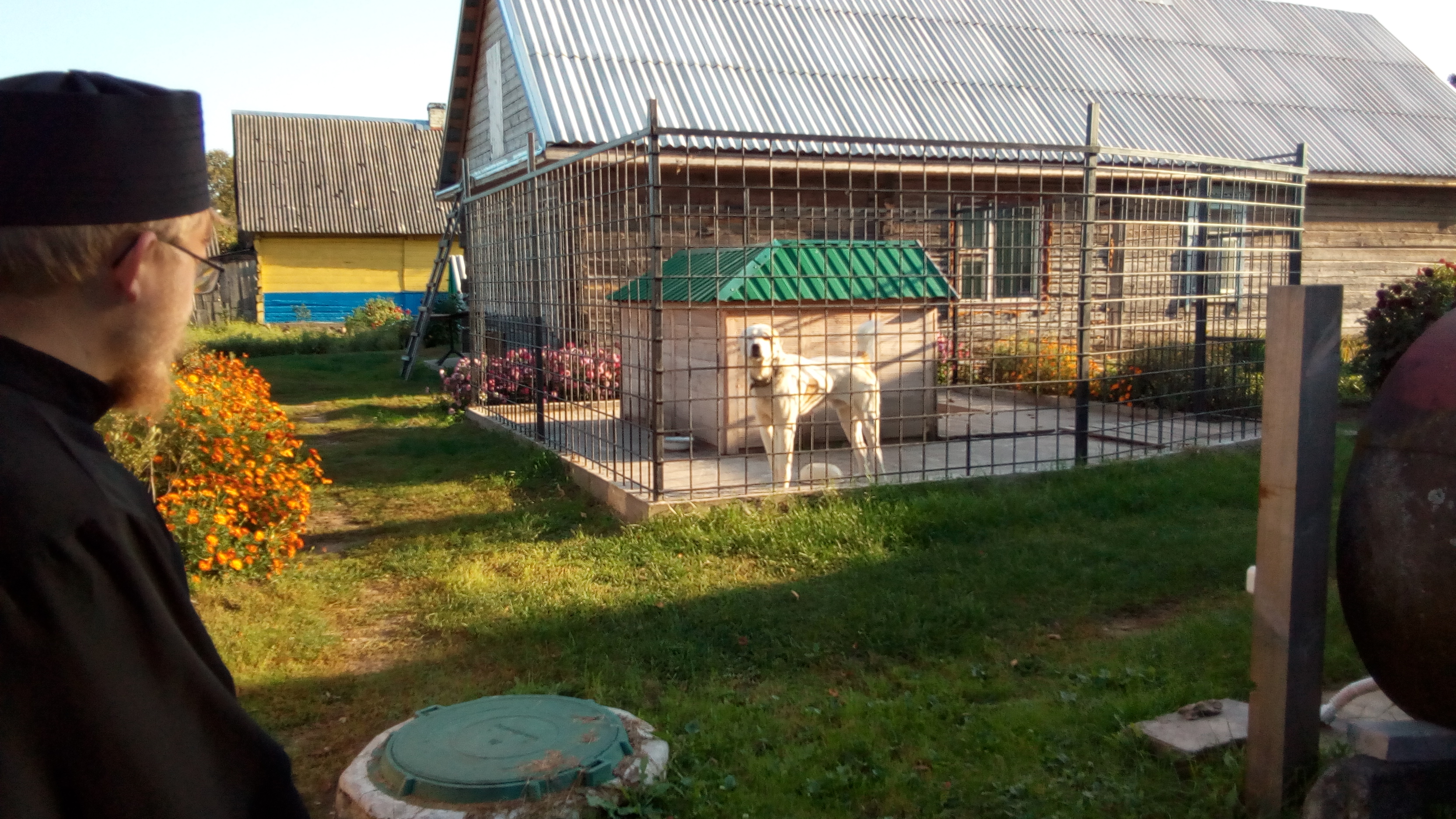
A Big bad guardian dog nearby the Church
Nuns and voluntery workers work hard in the skete a lot as just like in the ancient monasteries the skete nourishes itself mainly on their own production and the small financial help that comes from Zhirovichy Monastery when current official person in charge (a kind of Abbess) – Nun Mother Maria requests it in cases of unexpected events which can't be covered by the incomes of the monastery.
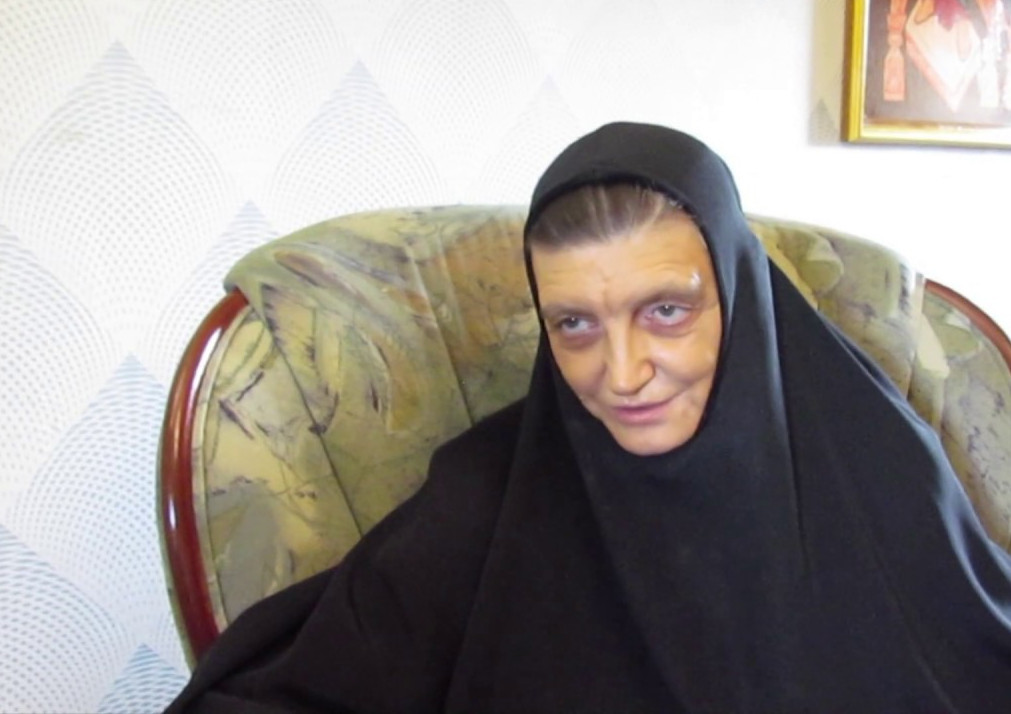
Elder sister (nun) abbess Maria Rusakovo Scete (skit) Belarus
Talking about incomes its main income is mainly from creation and selling of mixtures of Monastery prepared ointments of Healing Herbs, Olive Oil and other Oils.
Herbal natural medicines preparation is perhaps the main unique product for ordinary layman the monastery offers.
Here sister nun Anatolia who graduated bio-faculty higher education in her worldly life, compiles herbs, makes ointments, infusions and oils. This includes herbal health recovery cream (ointment) that is anti-inflammatory, analgesic, antiviral ointment, ointment for diseases of the veins, joint, skin diseases, anti-alcohol and anti-toxic infusions. The list is so large that you can’t name everything, I recommend you go alone and choose whatever you need …
The monastic farm is large, besides the many season grown vegetables and fruits and the hothouses which are used to raise vegetables in harsh Belarusian winters, they have about 100+ hens used to produce eggs and even among the hens could be seen an ancient breed of hens – the Russian Pavlovian hens, which was almost destroyed in Soviet times.
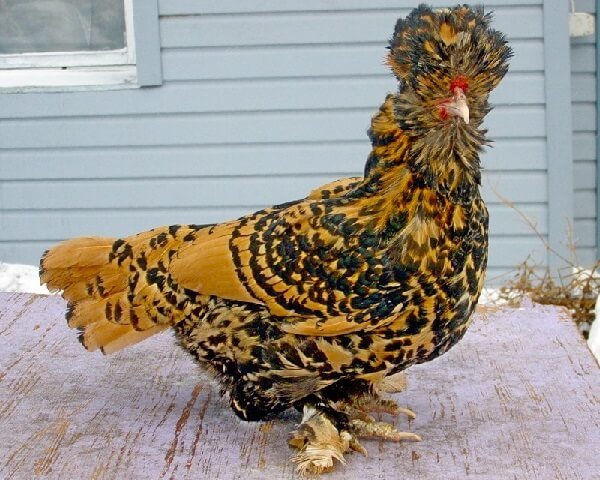
Ancient Russian Pavlovian Hen rarely to be seen in Russia and Belarus nowadays
Miraculously few of the Pavlovian hens survived. These chickens are different in that their eggs and meat have less cholesterol (but as the Sketes rule prohibits nuns and visitors to eat meet this chickens are only used as a source of eggs.
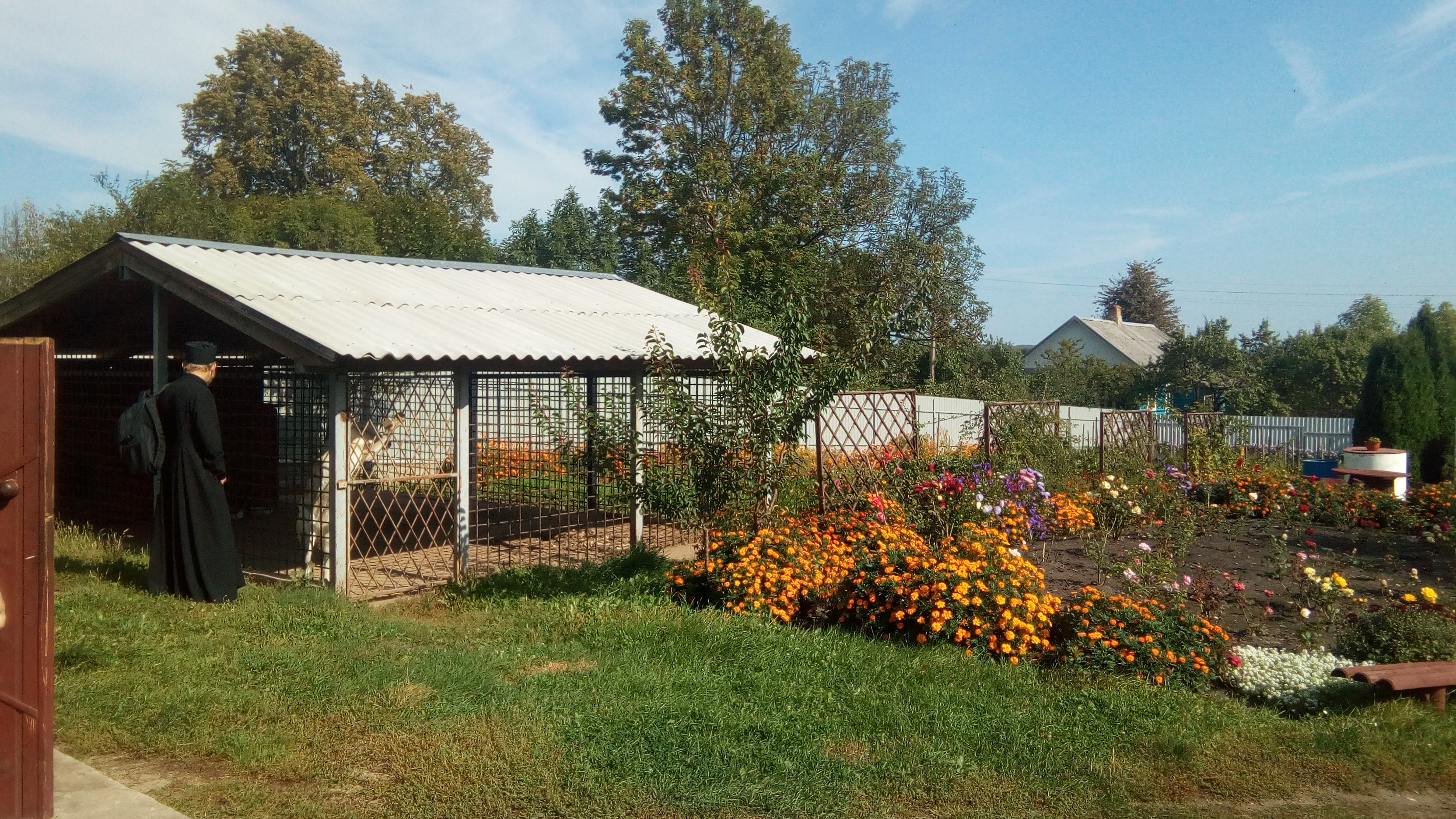
Another common source for feeding the Scetes are Mushrooms collection from the near Woods in which there is a strong tradition here in Belarus as mostly all people in villages and towns are riding and collecting eatable mushrooms together with healing herbs which are collected by the novice nuns, sketes voluntary workers and sometimes with a blessing by the nuns. Cats and dogs are walking all around the yards and the long village one straight street (which nowadays is consisting of a line of village old beautiful colored and well maintained wooden houses, most of which gradually become uninhabitant already due to most of Rusakovo's population was consisting of old people who passed away and their younger offspring choose to live already in big cities as Minks, Homel, Mogilov, Grodno, Vitebsk etc.).
To prevent this beautiful abondoned houses in Rusakovo from gradual ruin due to being uninhabitant, mother Maria along with the rest of Nuns decided to gradually buy some of the houses, some of which were turned as normal living places where visitors are usually being accomodated in Summer, the Belarusian Church is also organizing there a Summer School camps and those bught and restavrated houses are used as accmodation for the teenagers.
Once we arrived the Skete, we worshipped the holy relics in the Church and we want around the yard of the monastery where we met once again father Georgij with whom we had a few minutes talk after which he offered us to stay for the Night Vigil Liturgy that was organized in the monastery in honor of the feast of Saint Alexander Nevski (a great warrior saint that is highly venerated in Russia and all across the Orthodox countries that were part of the USSR), in honour of saint Alexander Nevski is named the Second Biggest Cathedral in the Balkans and Eastern Europe in city of Sofia Bulgaria. I do venerate saint Alexander Nevski thus it was a great joy for me the opportunity to stay for that Liturgy and respectively sleep in the skete.
After we were invited to stay by fr. Georgij with the blessing of matushka nun Maria whose blessing he requested by calling her over the mobile, we were brought for a Dinner in the scetes dining room, the dinner was humble but very delicious, where mother Tatiana (the nun) that was assigned to bring us to the dining room has prayed and blessed the food with a holy water. The dinner consisted of some boiled potatoes, tomatoes, bread, cucumbers and a sweet kind of jar cakes but perhaps due to the fact it was made with a lot of love it was more delicious by the worldly food we consume daily.
After the dinner novice monk Alexander brought us to the pilgrimage house and accomodated us. I have to say this man was very kind and a good hearted man. Even seeing each other for a first time the interaction with him was so opened and easy that it felt like we knew each other all our lives.
Midnight Liturgy started in 11:30 and continued until almost 02:00 a.m.. and after the Night Liturgy we went home and slept just to wake up in the morning in 09:00 full of joy and energy (perhaps due to the prayers of the nuns, the vigil itself the clean air and most importantly because of abundant God's grace that was filling up this blessed place).
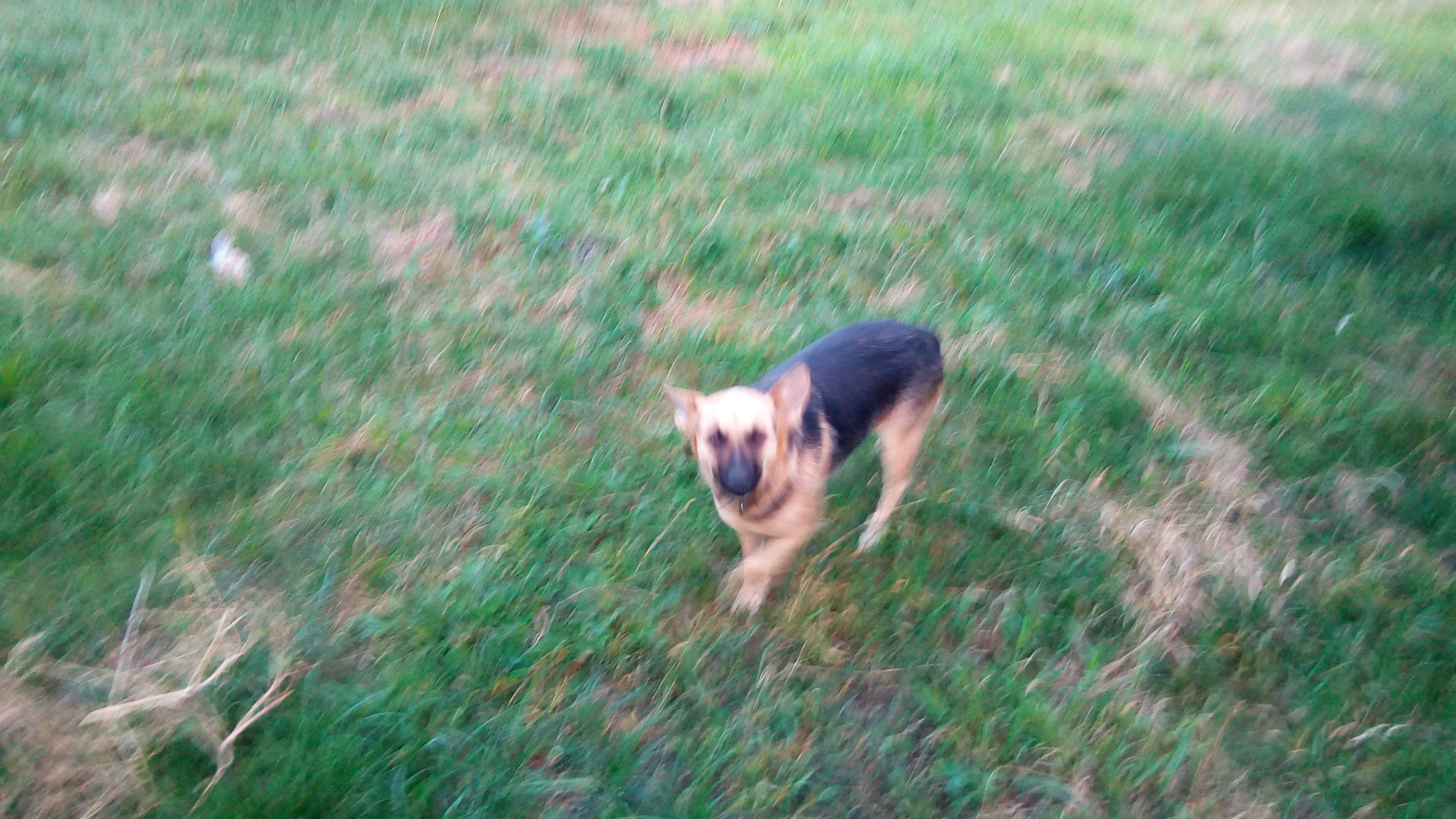
Upper picture you see one of the friendly dogs (though it apeared different on the picture) that was following us all the time in the monastery, the mind association I got this dog follows us very much resembling our Guardian Angel who is always following us and helping us in our daily deeds, the very same Holy Angel we Orthodox Christians believe to receive during baptism.
It is common here that a car flies past and an animal is thrown out of it. Just recently the next in line unwanted animal that was left in Rusakovo is one-eyed dog. In the same way, the Marquise cat a victim of car hit was saved from sure death thanks to the nuns, who brought the animal for medication in near place animal hospitals. Marquese now have the chance to live a normal life after intensive care from the good hearted nuns.
To survive the harsh winter in Belarus the Skete inhabitants are preparing conservated jars with whatever vegetables and fruits have been locally grown during the summer as it is being done almost all across Russia, Belarus and mostly all Eastern Orthodox countries (Bulgaria, Serbia, Moldavia, Romania) etc.
The skete's private houses bought has currently a capacity to accomodate about at least 50 – 80 people, sometimes for a great Orthodox feasts as many as 27 individuals came and was accomodated in the Skete.
The usual day of the Rusakovo Scete is seen on the Door of the pilgrim accomodation room and is relatively easy perhaps because the goal of the Skete after all is to leave its visitors more time for thinking over their life and God's providence and to pray
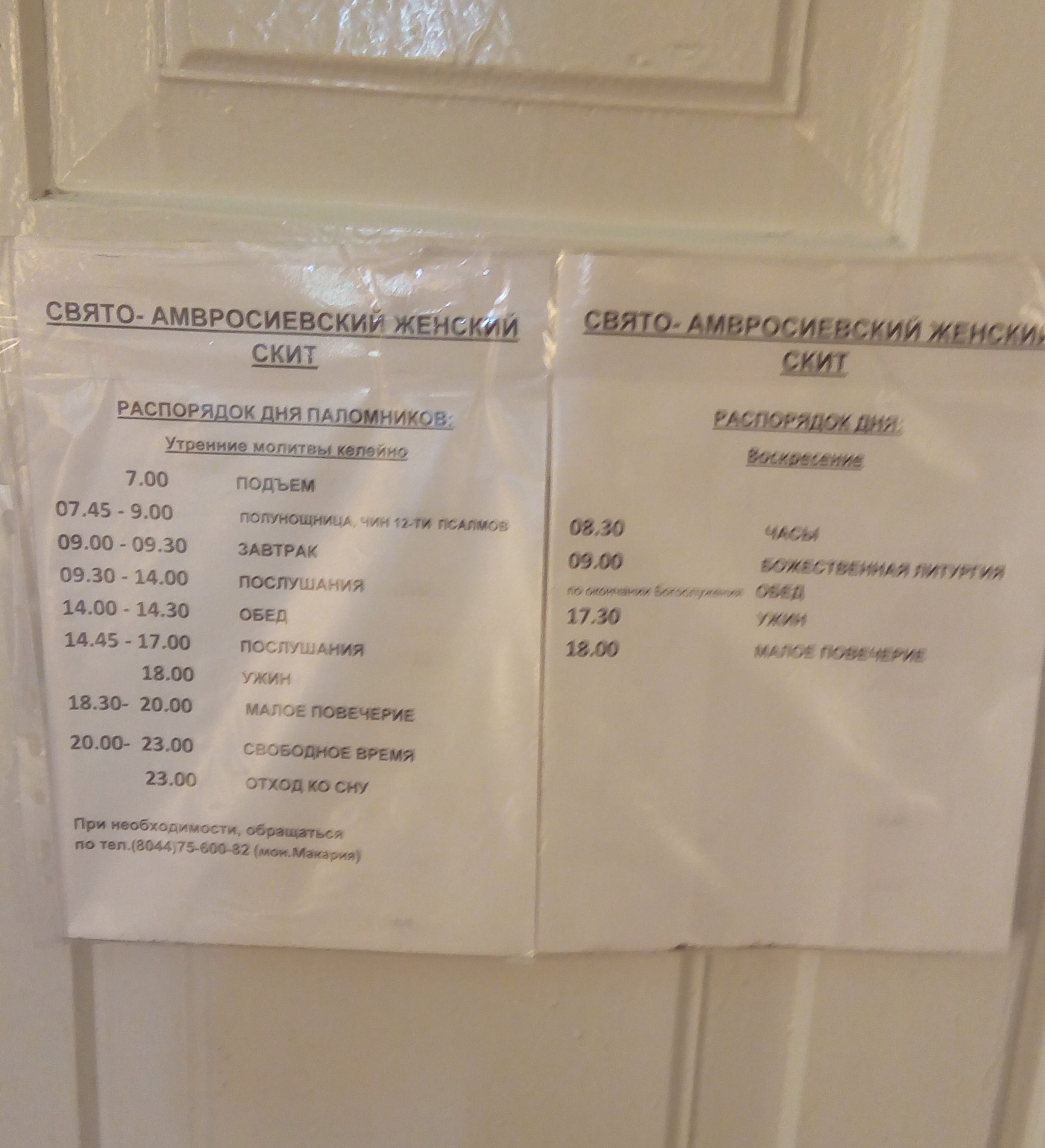
The daily Schedule of the Scete looks like so (transslated from Above text which is in Russian):
07:00 – Wake up
07:45 – 09:00 – Night Vigil with 12 Psalms
09:00 – 09:30 – Breakfast
09:30 – 14:00 – obediences (work on things ordered)
14:00 – 14:30 – Monastic Lunch
14:45 – 17:00 – obediences
18:00 – Monastic Dinner
18:30 – 20:00 – Compline (Malko Povecherie) End of the day prayers
20:00 – 23:00 – Free Time
23:00 – Sleep hour
On Big Sunday – The day of resurrection which is the biggest feast commemorating the glorious events of Christ's Resurrection from the grave and victory over death the schedule is even lighter
08:30 – Canonical Hours
09:00 – Holy Liturgy
17:30 – Lunch
18:00 – Horologion – Greek: ὠρολόγιον (Chasoslov / Часослов in church slavonic )
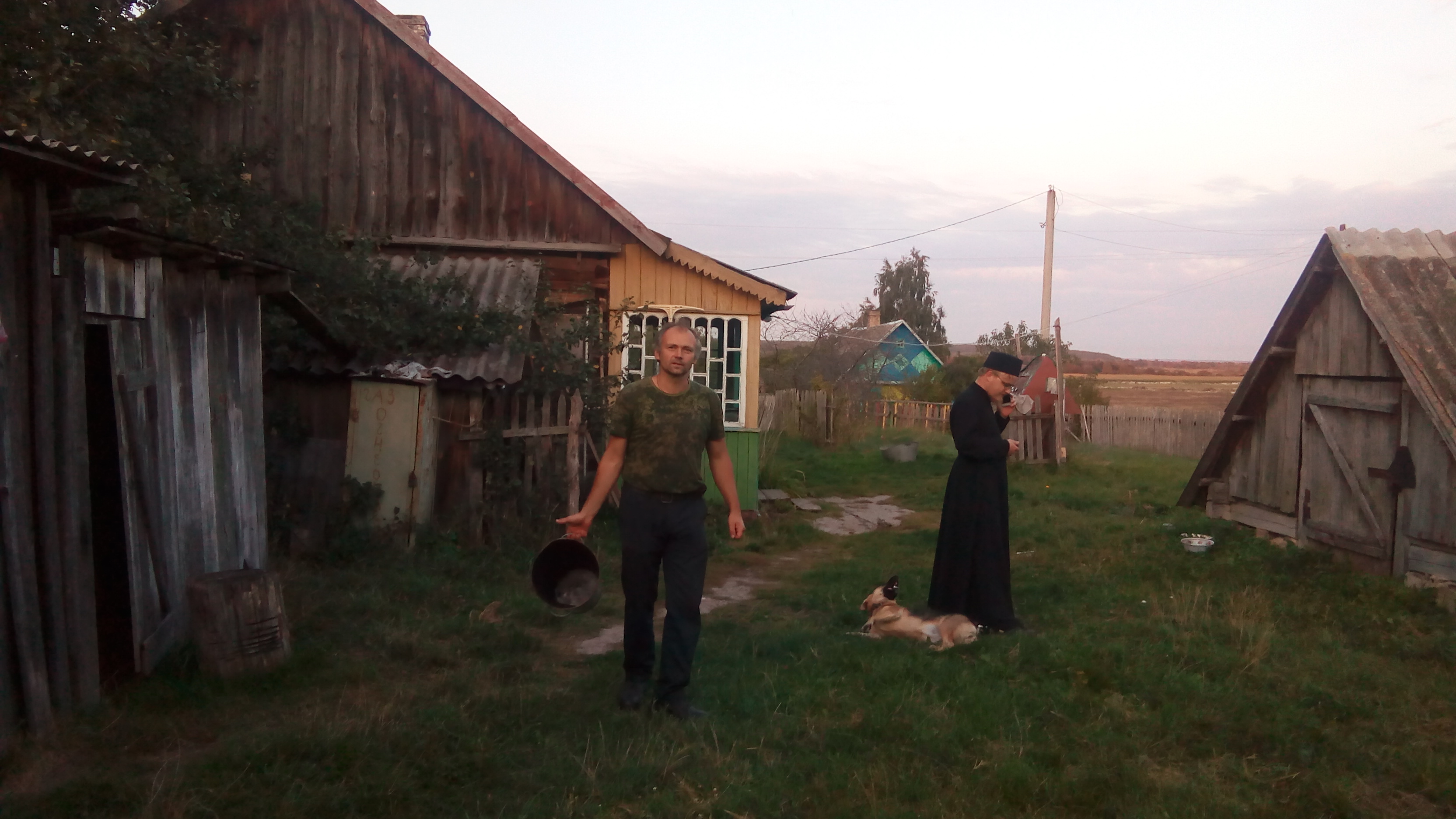
Novice Monk and monastic worker Alexander sent from Zhyrovichi monastery together with brother Evgeny (a graduated Theologician who graduated Jirovichi Minsk spiritual academy 5 years course)
The pilgimage house was a standard but well and cozy old Belarusian wooden house with all the comforts you might dream for, e.g. – a bed, a blanket and even an old stove, that is used in times of cold in Winter, late autumn and cold spring times.
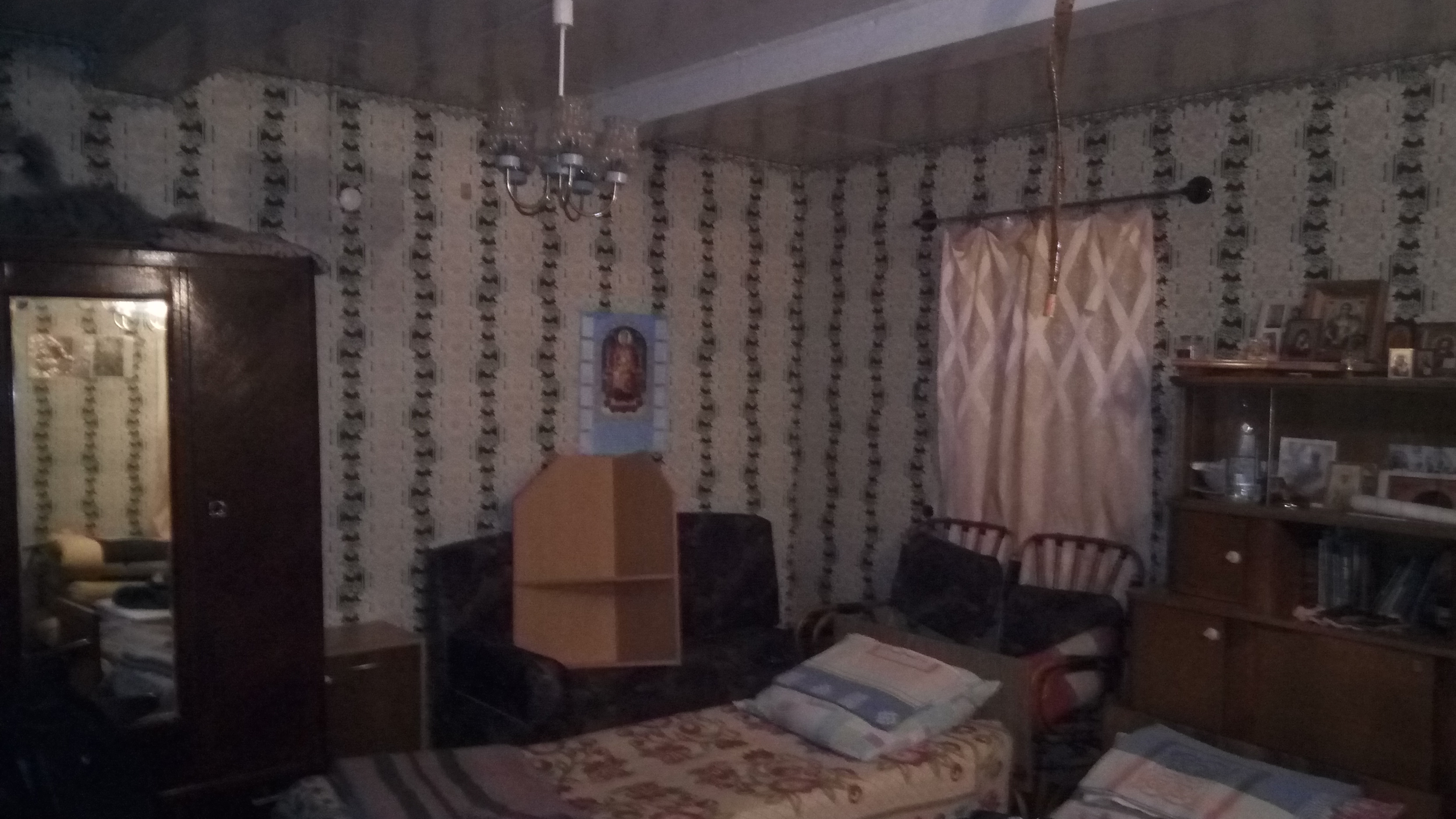
![]()
The prayer corner situated East as it is in every Orthodox Chapel
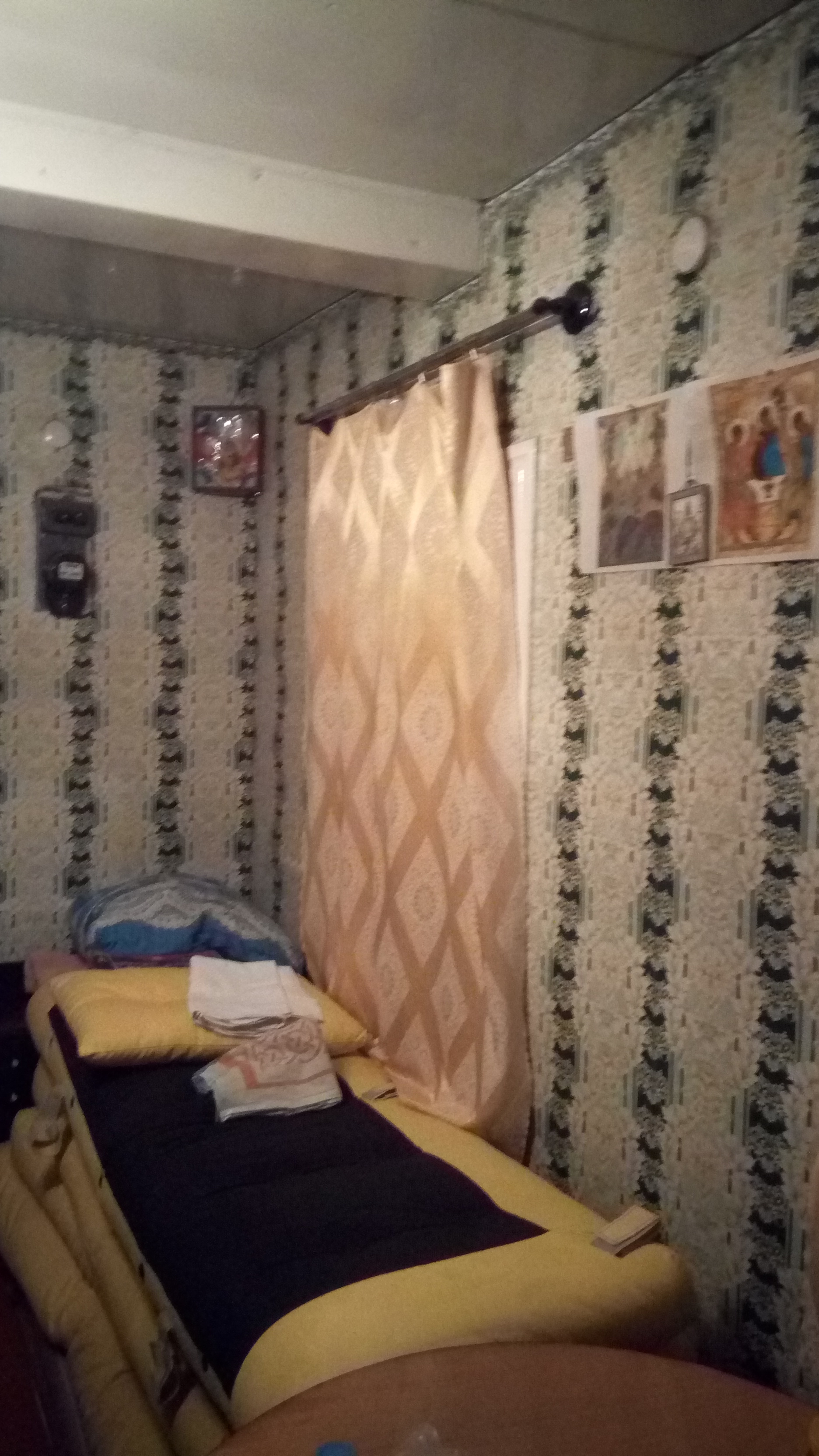
One of the room beds note the Upper right corner situated Icon this is a traditional place where Belarusians who are generally very pious people place their icons
To obtain a drinkable water each of the pilgrimage accomodation houses has its own well. As Belarus is a country rich in Lakes 11 000+ lakes it is a country generally rich in water. And most people in villages are digging about 50 to 90 meters to have their own well – a free of charge source of water.
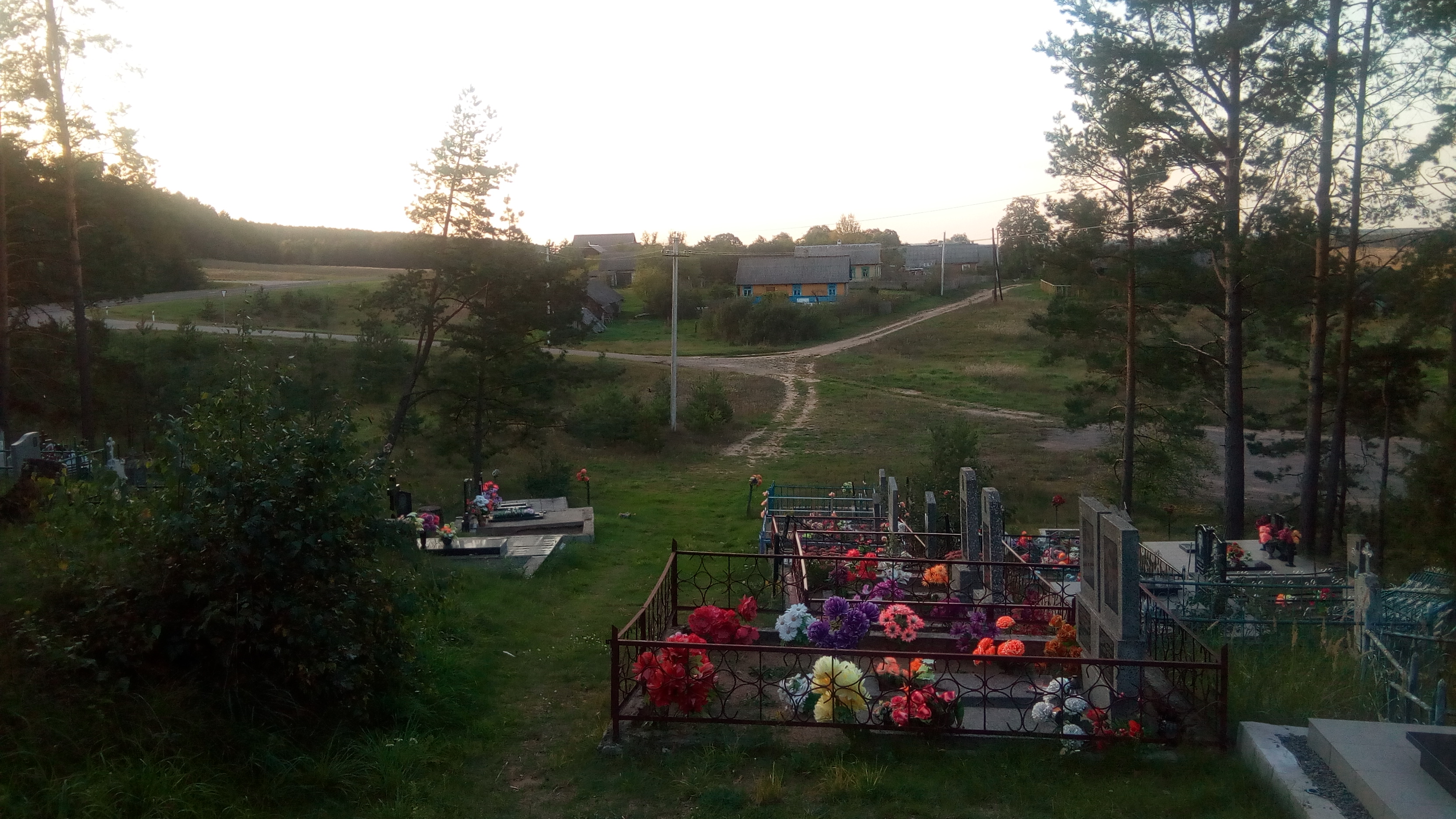
Graveyard at the end of Rusakovo village (that has buried many of old village inhabitants and a lot of good christians.
One thing I've noticed in Belarus is many of the Graveyards places in this country are placed on the highest heighted place (hillock) in the region, perhaps they do this because they expect the dead to be nearer to heaven to which each of the resurrected bodies should be taken on the Resurrection day as we believe in Christian faith.
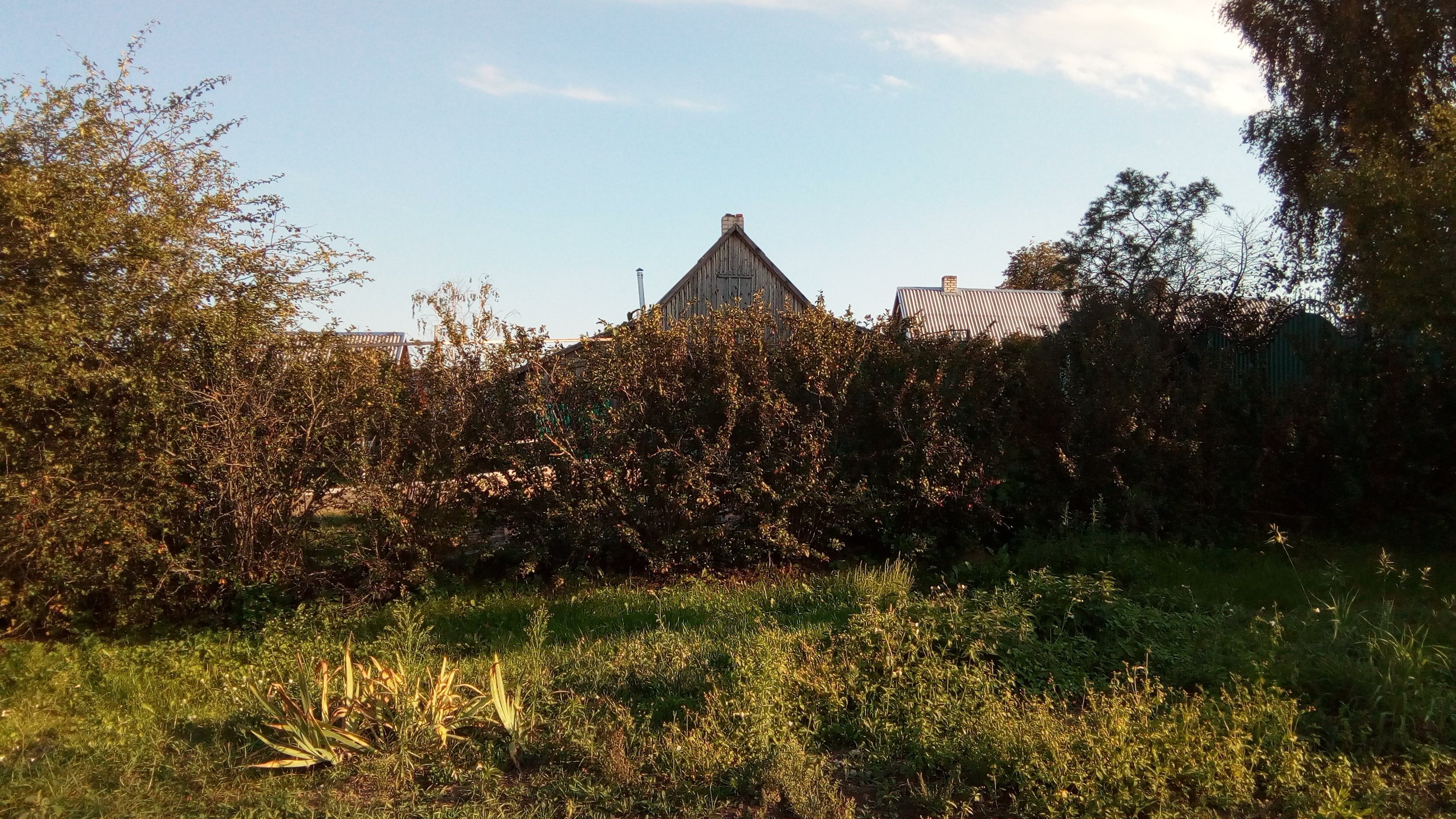
View of Rusakovos nature and a pilgrim accomodation house
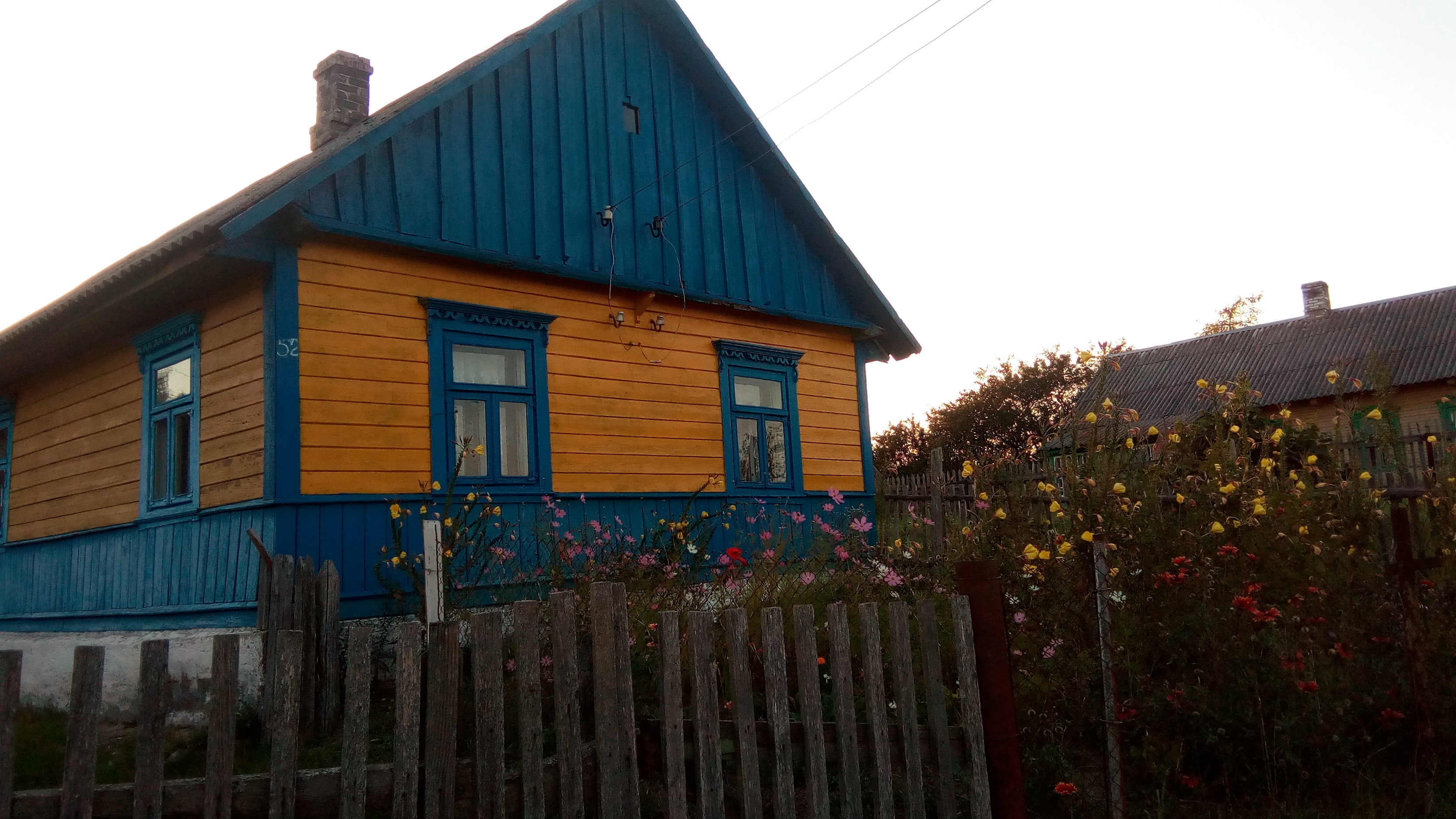
This is how the pilgrimage accomodation houses of Rusakovo Scete looks like
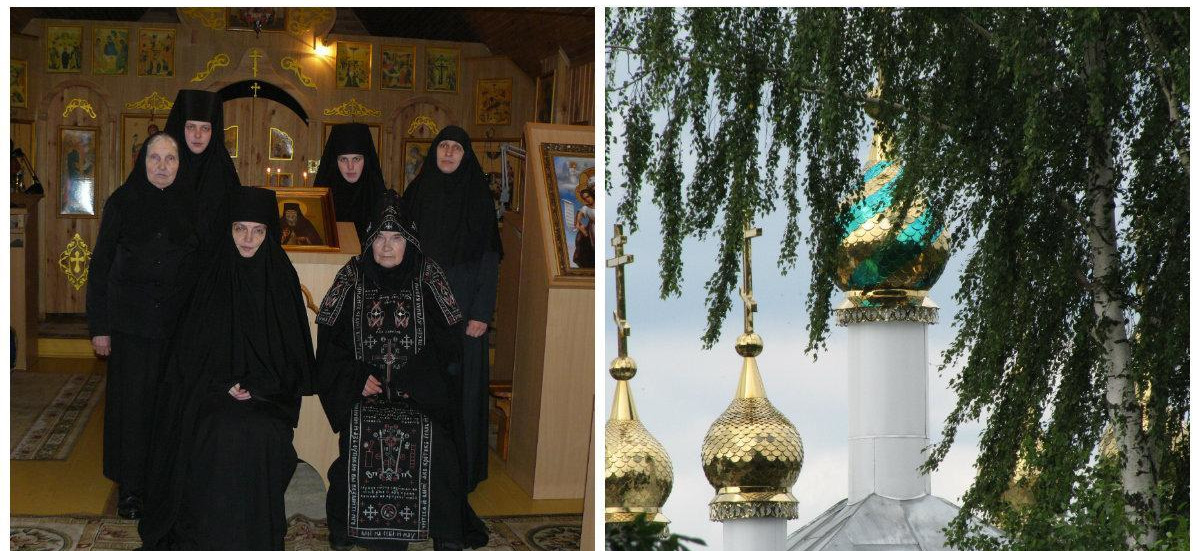
Few of the nuns of St. Ambrose of Optina Skete
Rusakovo Skete has a vkontakte group where you can contact them and if you like you can ask for a blessing to stay a couple of days if you're ready to work for free like 4-5 hours a day and feel the atmosphere of this blessed place.
On the next day after we woke up, we were brought by the novice monk Alexander again to the dinner room and they gave us a delicious fasting breakfast in 11:00. After that we thanked them and hitchiked to see another smaller skete in Sceniavichi the next village inhabitated with only 3 nuns vowed themselves to follow a harsh ascetism.
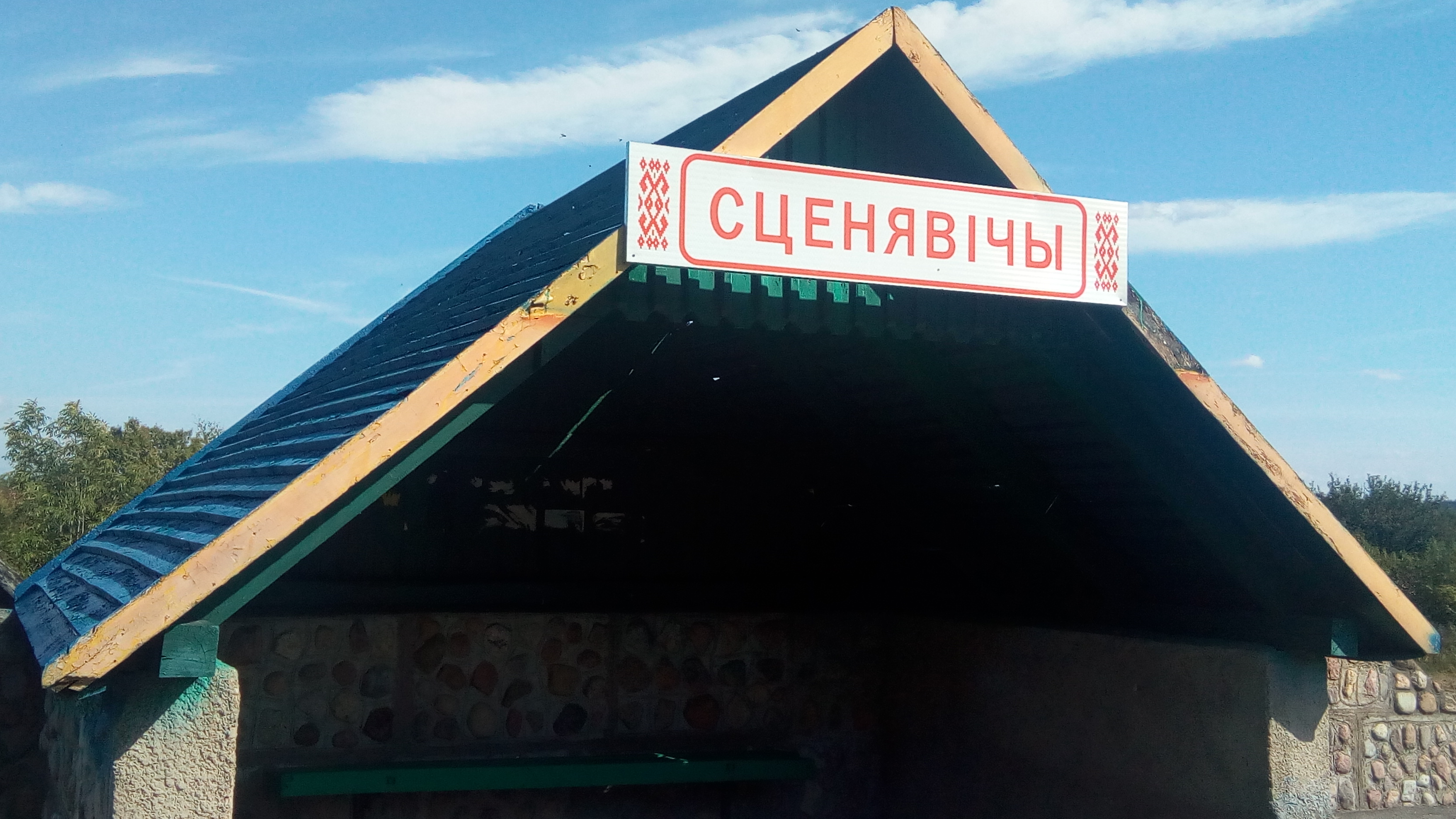
Bus stop of Sceniavichi Skete village Belarus
Finding the Skete took us about 10-15 minutes walk from the bus stop, we had to walk like 3 minutes in direction of entering the village and then turn right and walk for some time until we reached the big fance as in below pic.
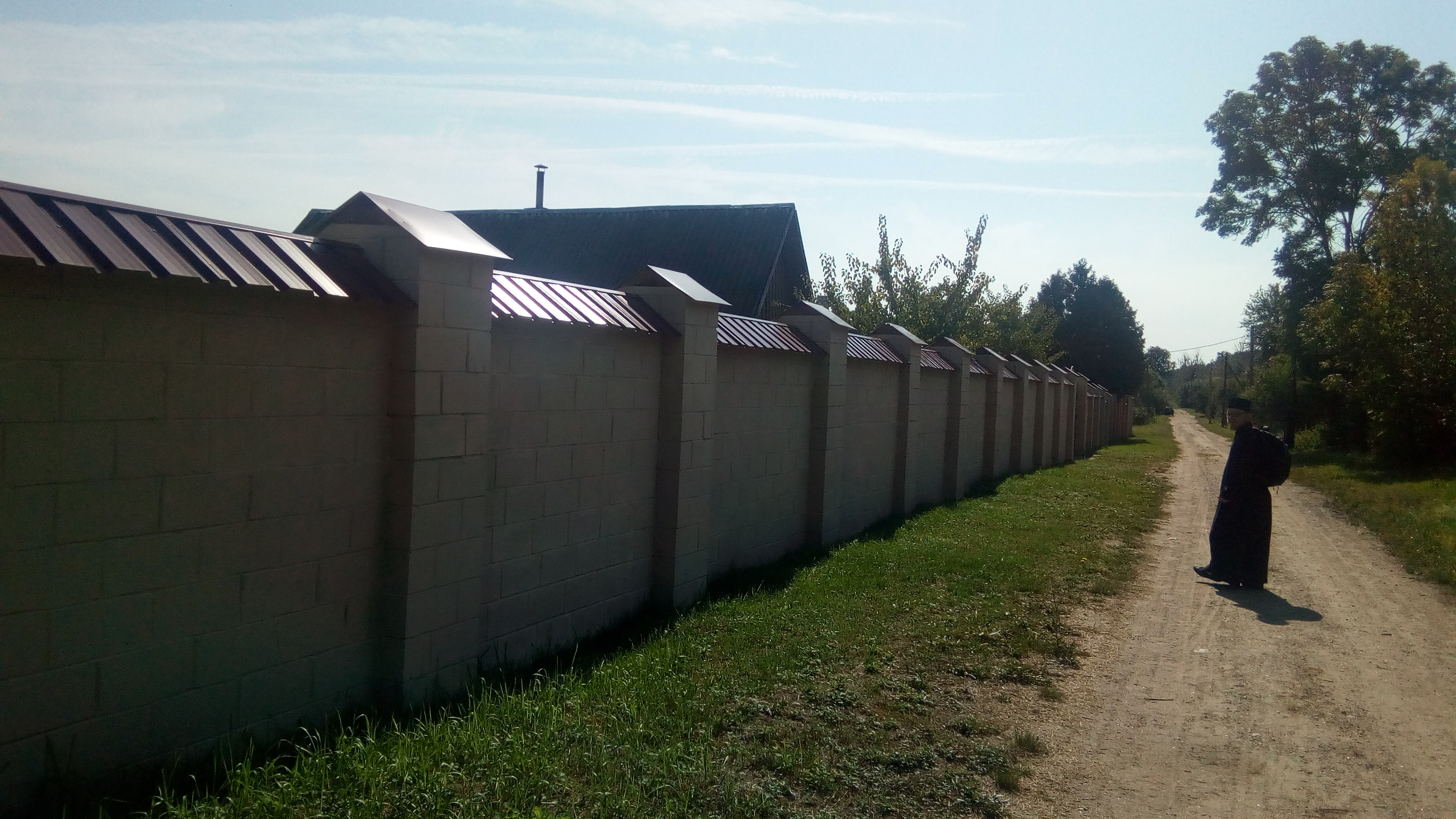
Skete Sceniavichi fence wall
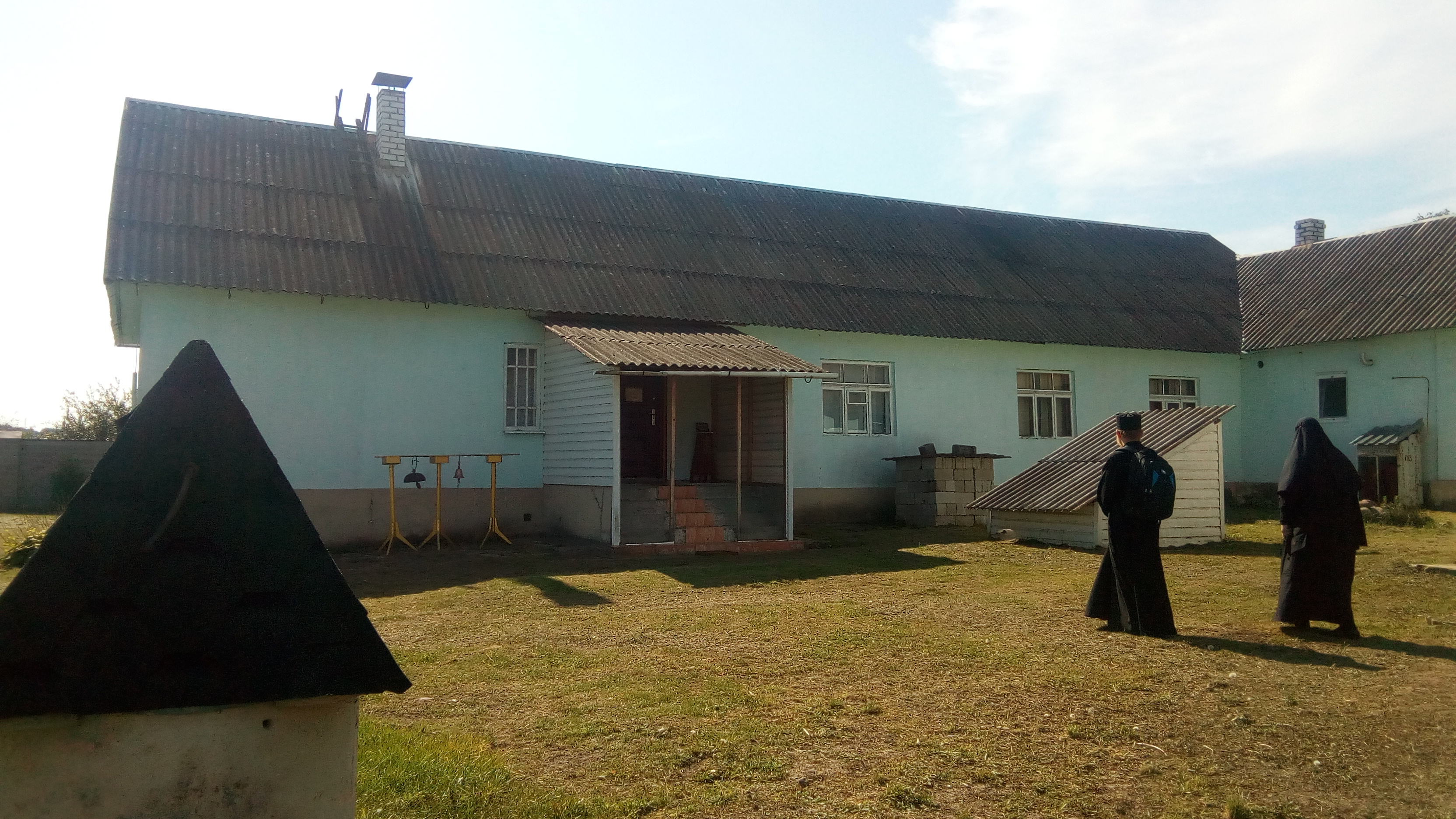
The house type of Church of Sceniavichi skete
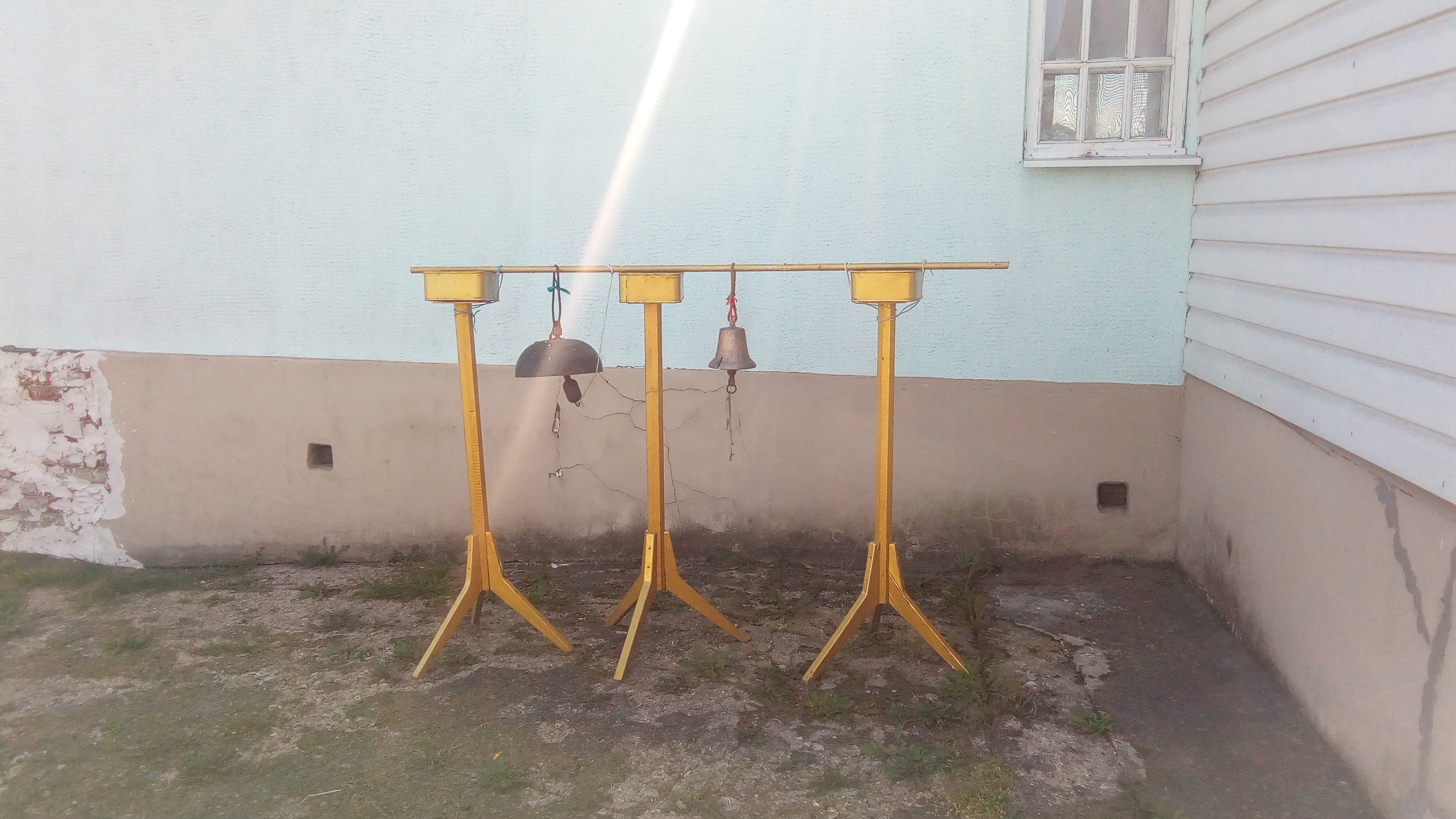
Church bells
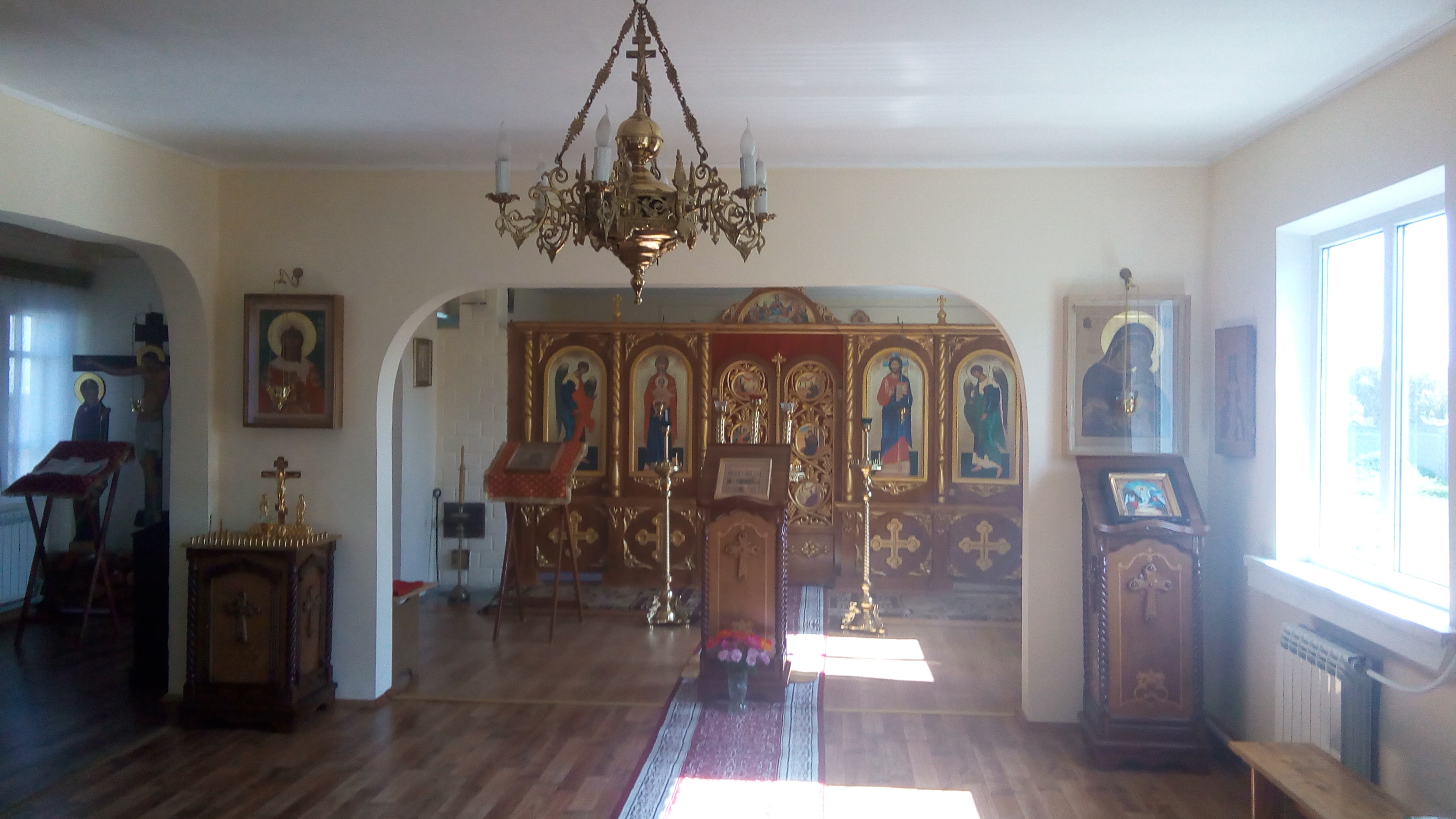
Inside the Sceniavichi Skete Church view to Iconostasis
![]()
Icon of All New Confessors of Eastern Orthodox Faith of Belarus
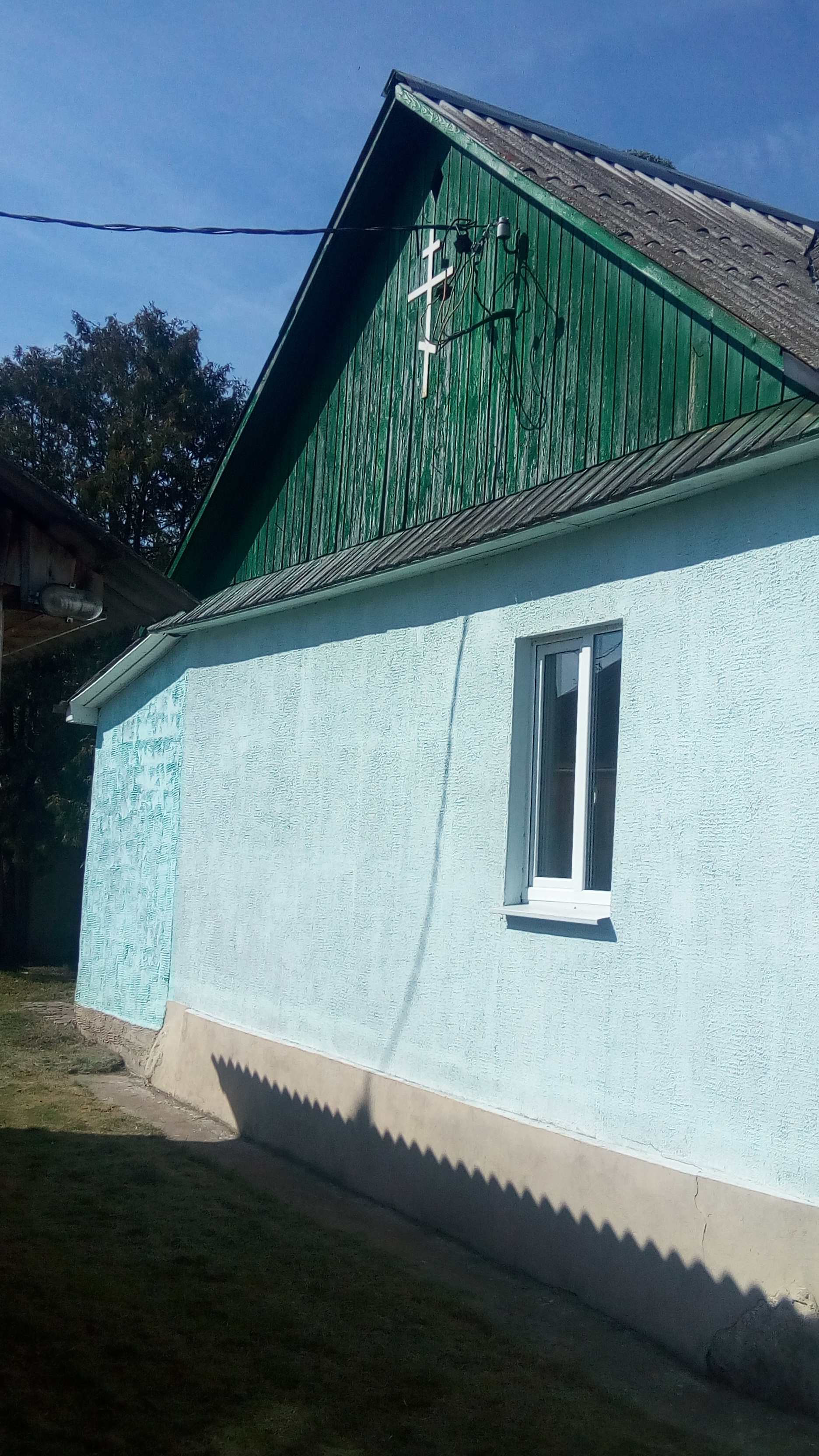
Skete of Sceniavichi monk cell house
We were received in the Scete by a sister nun Olga a kind young nun which showed us the Church and offered us a coffe with some traditional belarusian fried dought (called draniki). Nun Olga happened to be a zograph (icon painter). The lady was mostly kind to us and even give us a gift of a small Calendar with the famous Prayer of Saint Ambrose of Optina and the last Elders of Optina below is the prayer itself:
The Prayer of the Last Elders of Optina
O Lord, grant that I may meet all that this coming day brings to me with spiritual tranquility. Grant that I may fully surrender myself to Thy holy Will.
At every hour of this day, direct and support me in all things. Whatsoever news may reach me in the course of the day, teach me to accept it with a calm soul and the firm conviction that all is subject to Thy holy Will.
Direct my thoughts and feelings in all my words and actions. In all unexpected occurrences, do not let me forget that all is sent down from Thee.
Grant that I may deal straightforwardly and wisely with every member of my family, neither embarrassing nor saddening anyone.
O Lord, grant me the strength to endure the fatigue of the coming day and all the events that take place during it. Direct my will and teach me to pray, to believe, to hope, to be patient, to forgive, and to love. Amen.
sister Olga was so kind to show us her icon painting atelier and after further talk with her we found out some interesting details, like the fact the 3 sisters living in Sceniavichi scete has given vows to not eat any meat or any animal products while they're in the scete and since 1.5 years we found this ascetic nuns were fed only with vegetable food.
Joyfully we had from their to Zhyrovichi monastery farm where monastery property consists of cows, sheep, pigs, caprines, goats, horses, ducks, turkeys, hens which is about 2 kilometers away from Zhyrovichi.
The farm is functioning based on the monastic system of blessings over each of the workers just like any monastery functions based on obediences and I have to say it works pretty well. The horses in the farm are breeded as an attraction for the groups of young pupils that ride to visit the monastery regularly for a Summer Orthodox Christian Schol Camps.
Below are some pictures taken from the monastic collective farm – there is no question this is definitely interesting for youngsters nowdays most of whom have raised in the cities and never had a chance to ride on a horse or see most of the animals that each of our grandma and grandpa had in their own village house in the short past.
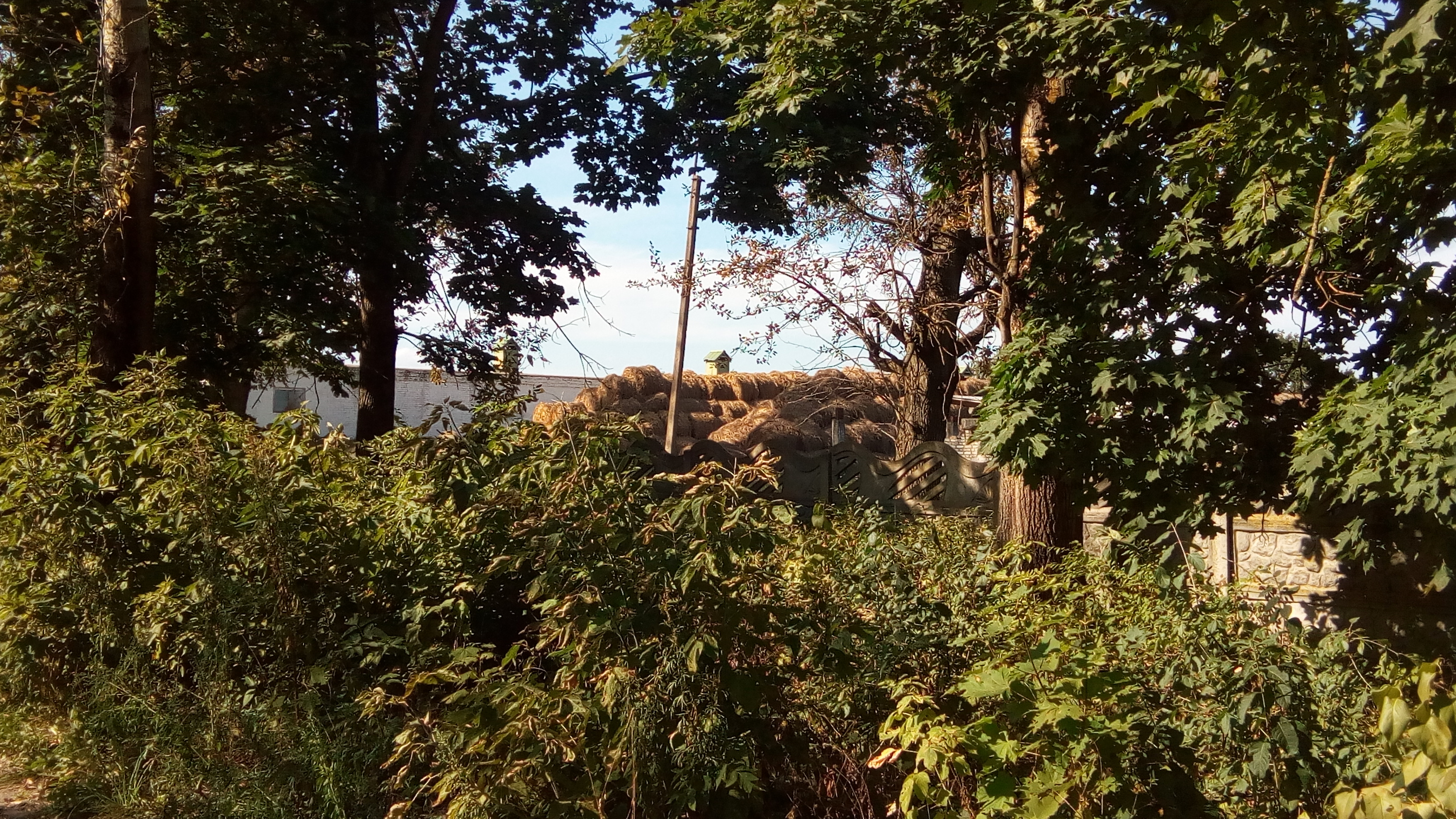
A near view to monastic farm Zhyrovichi Dormition of Virgin Mary Monastery
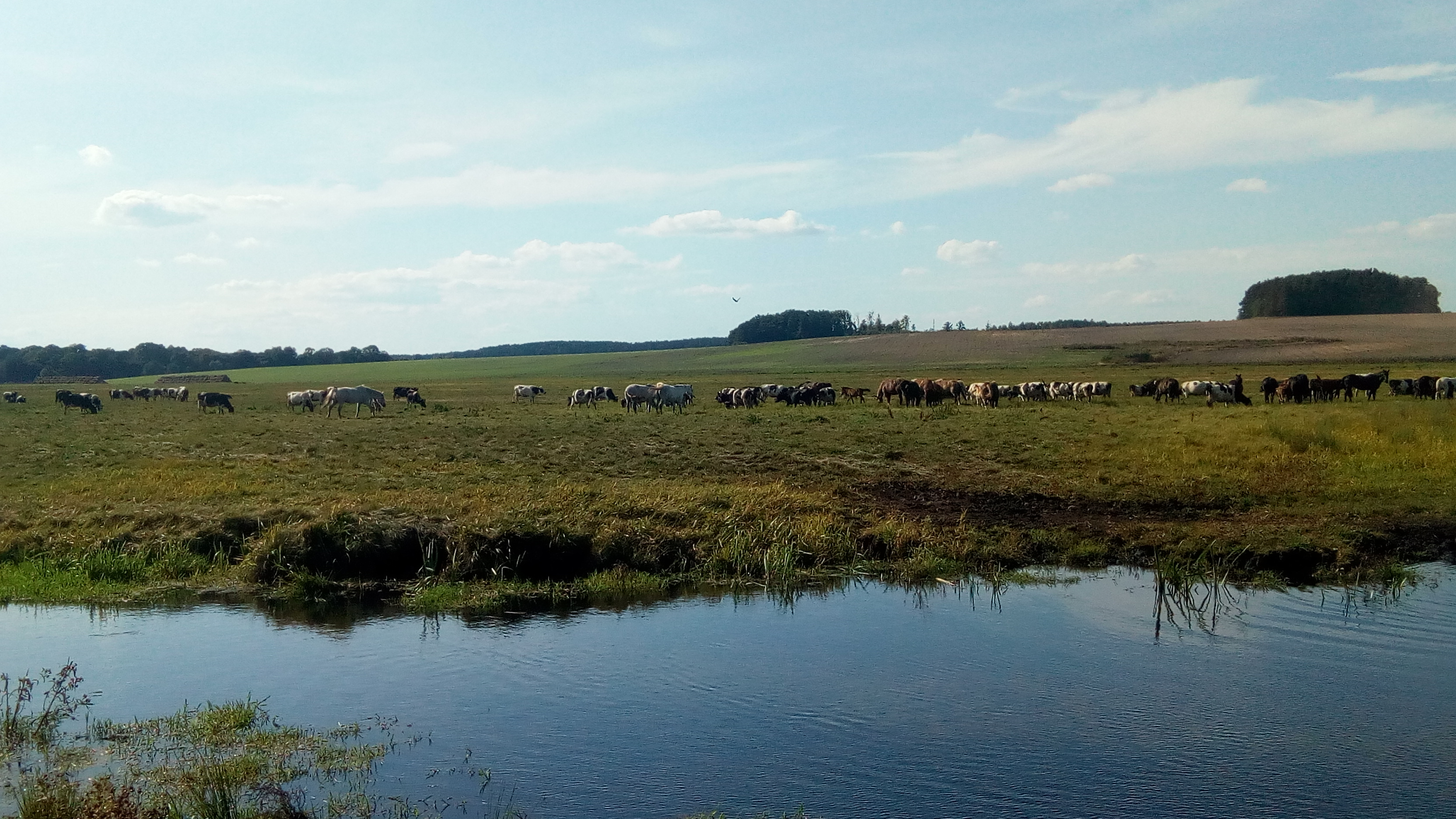
Cows pasture near farm
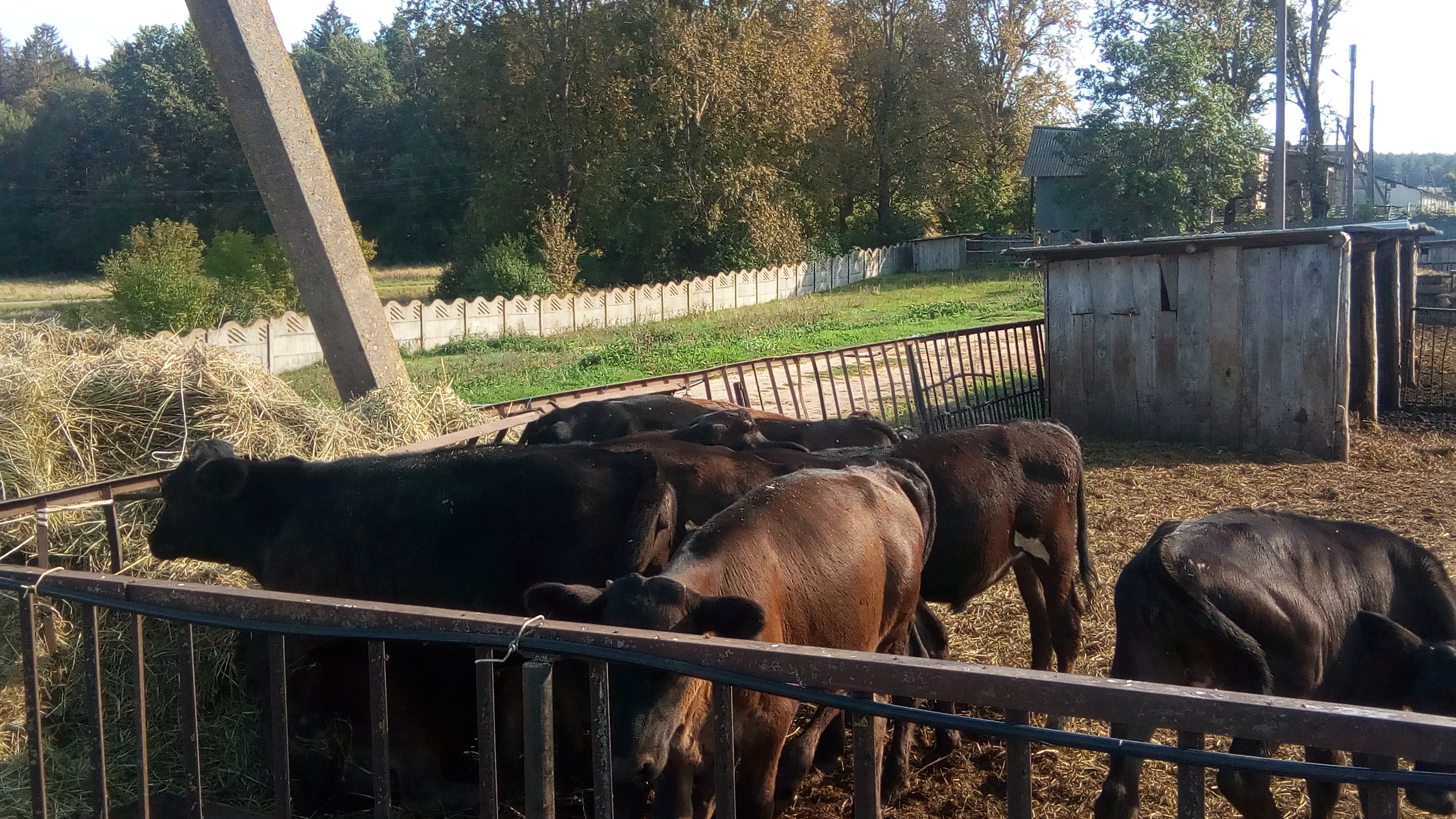
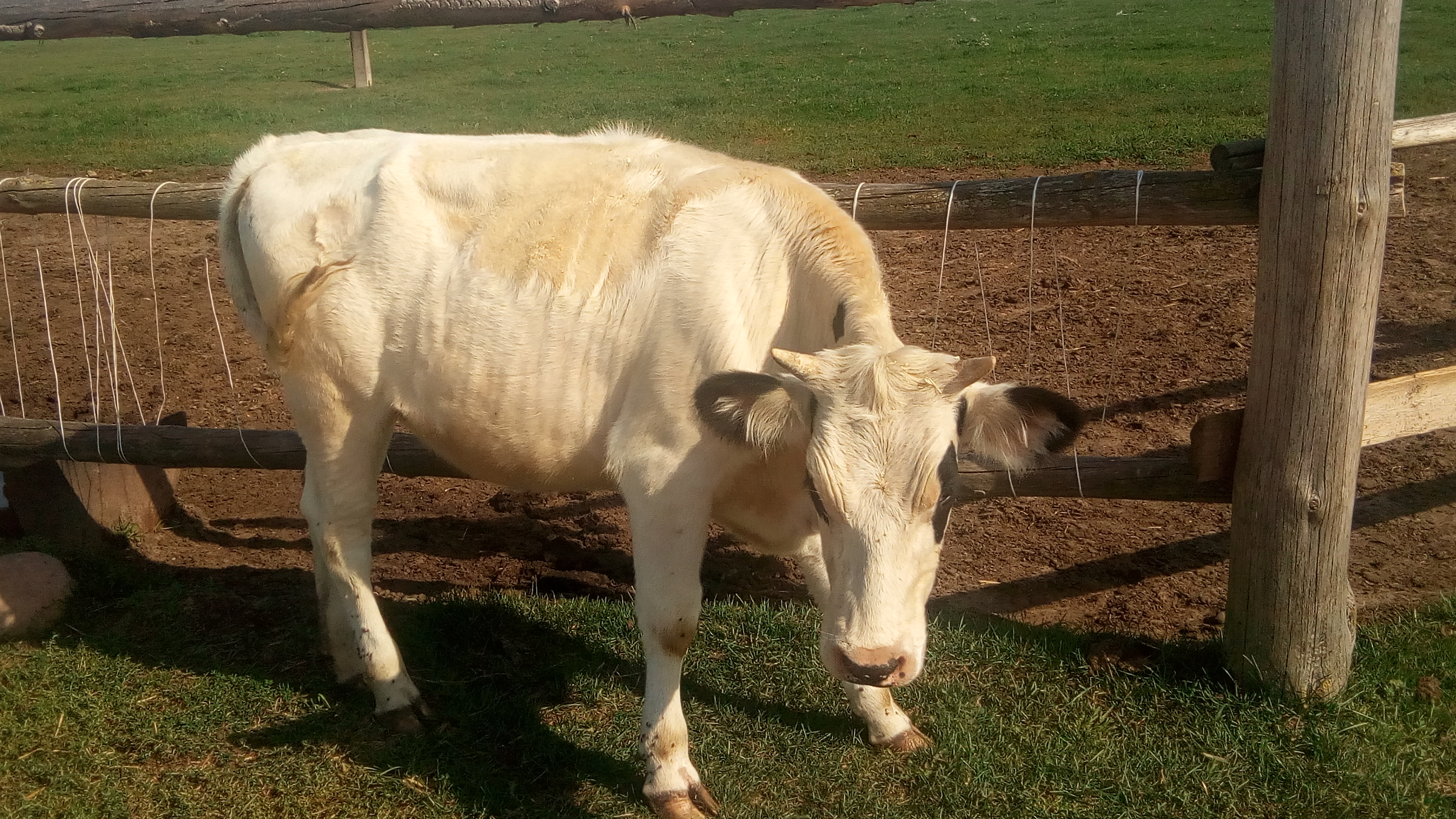
Moooooo !
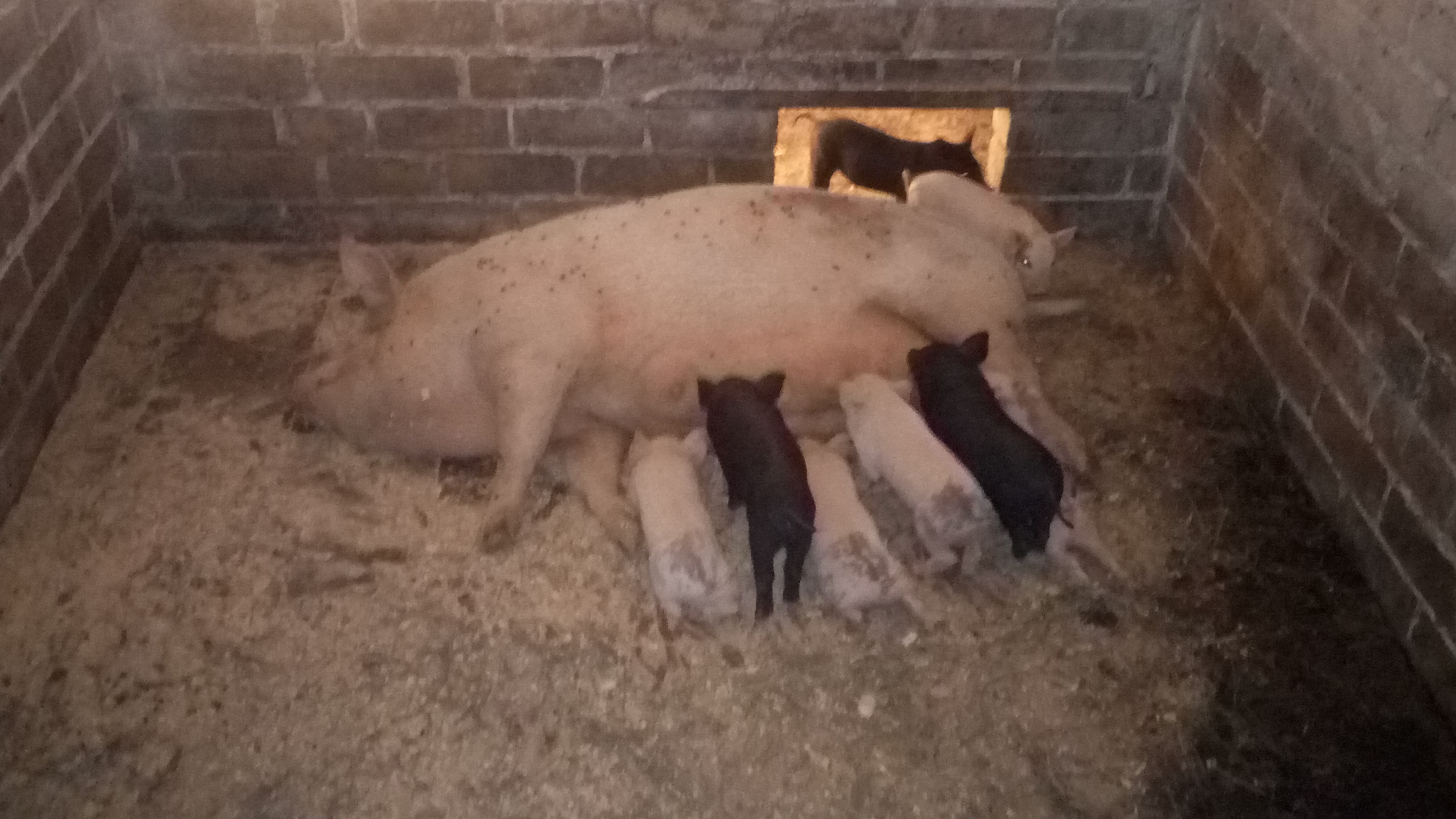
Mamma pig with the piggies 🙂
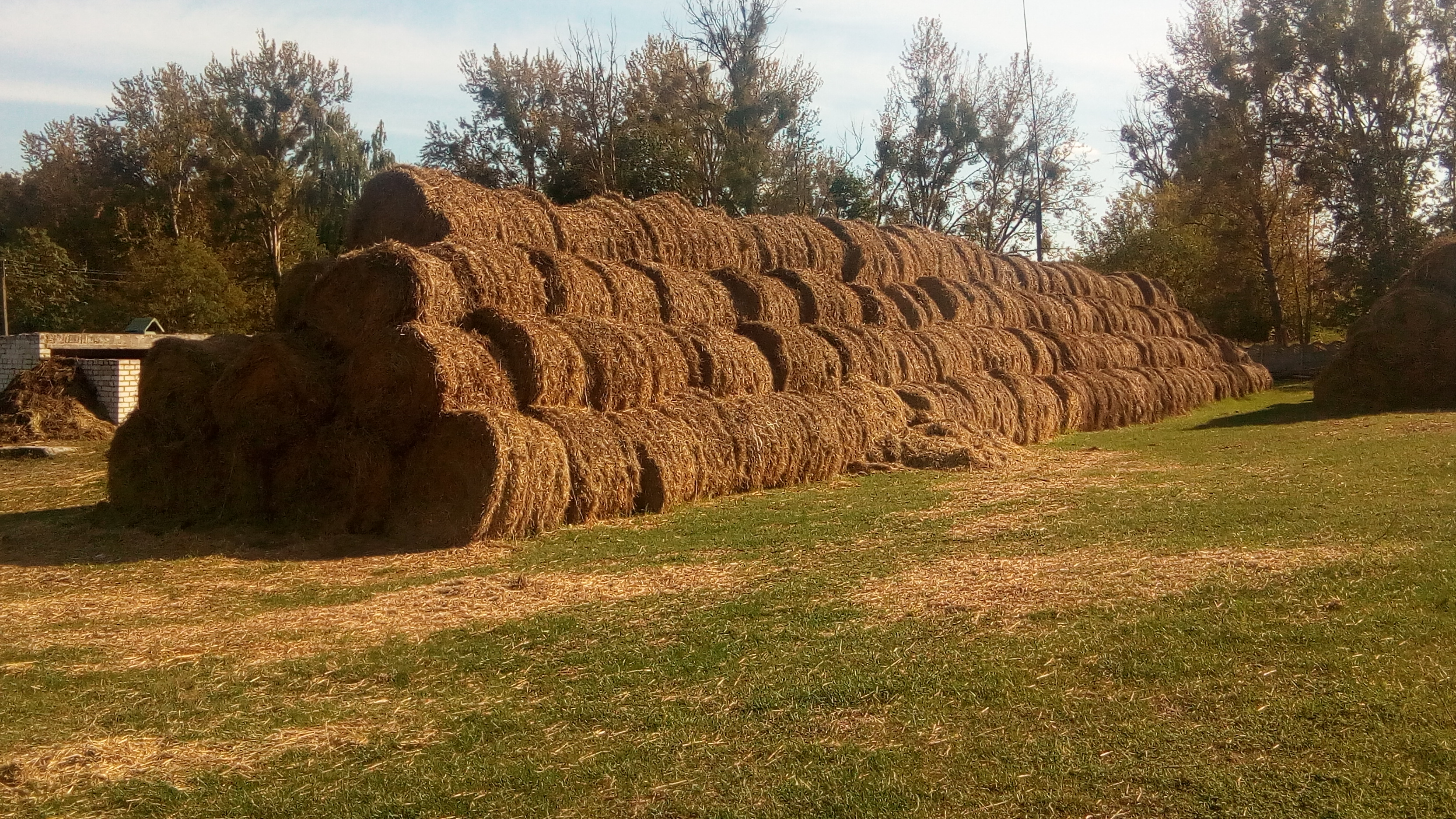
Bale piles used for food and floor cover in the animal cells
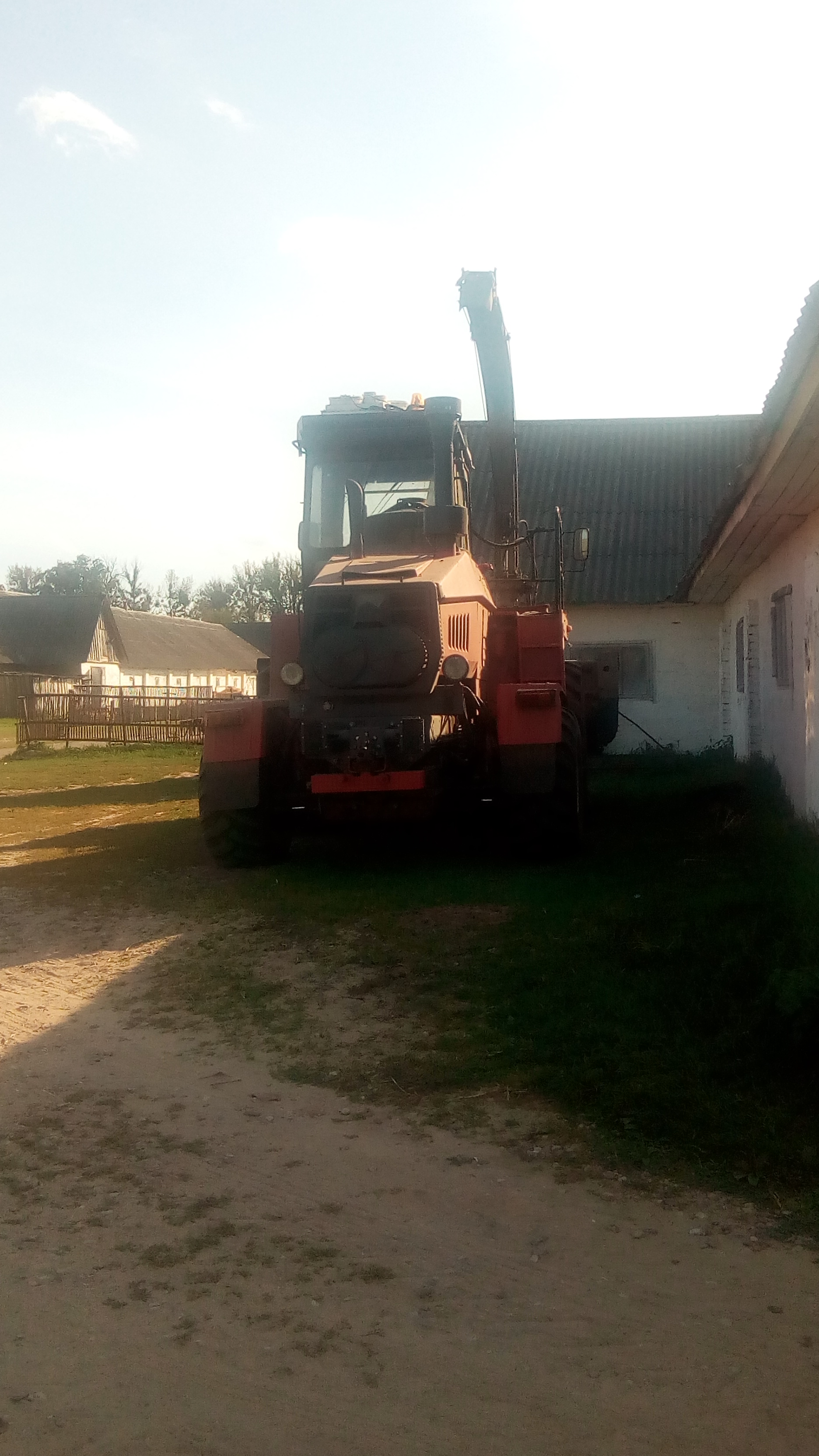
Belarusian Seeding Machine Traktor in the farm
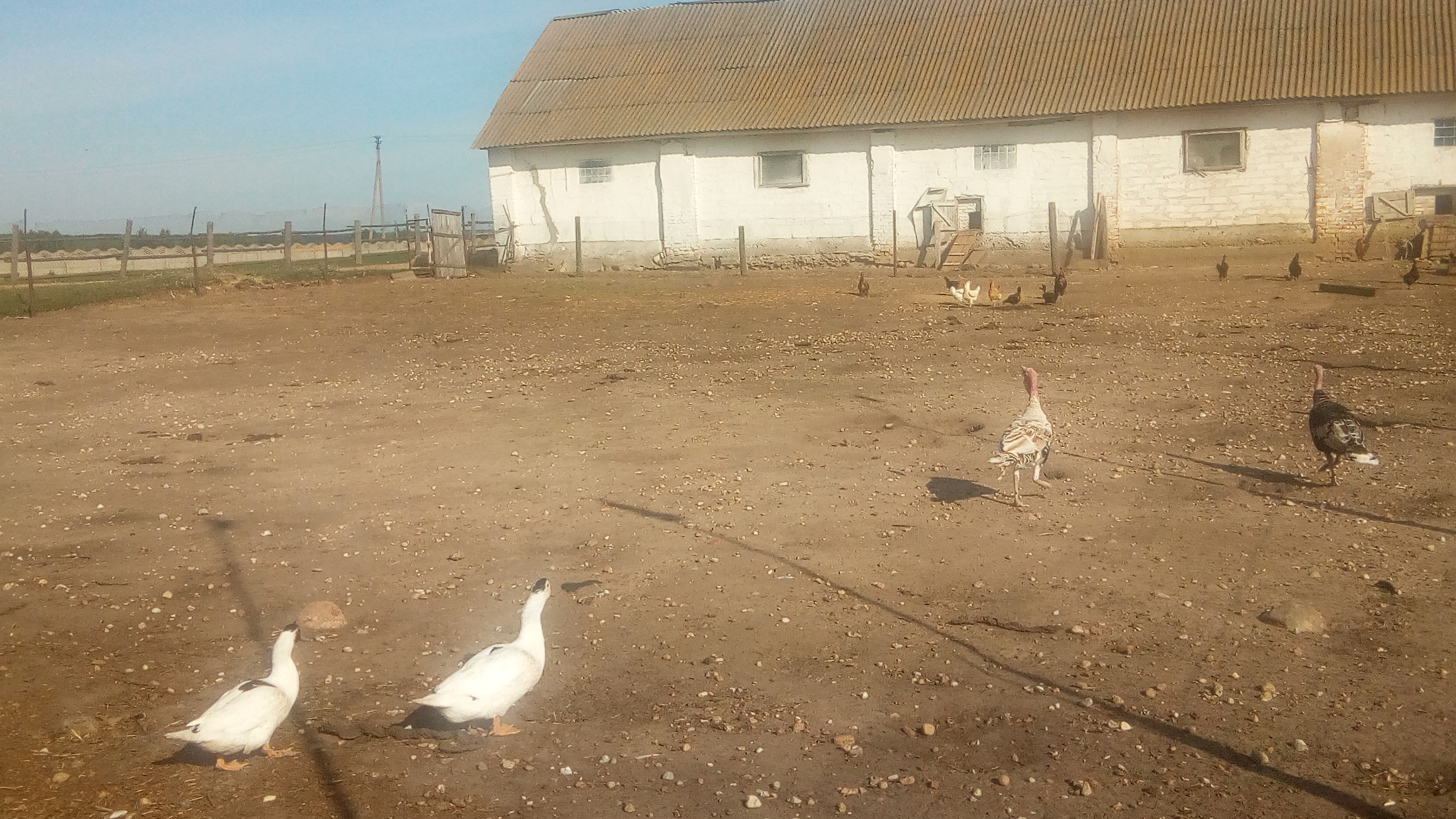
More helpful Articles

Tags: ambrose, optina, rusakovo, saint, skete, village







